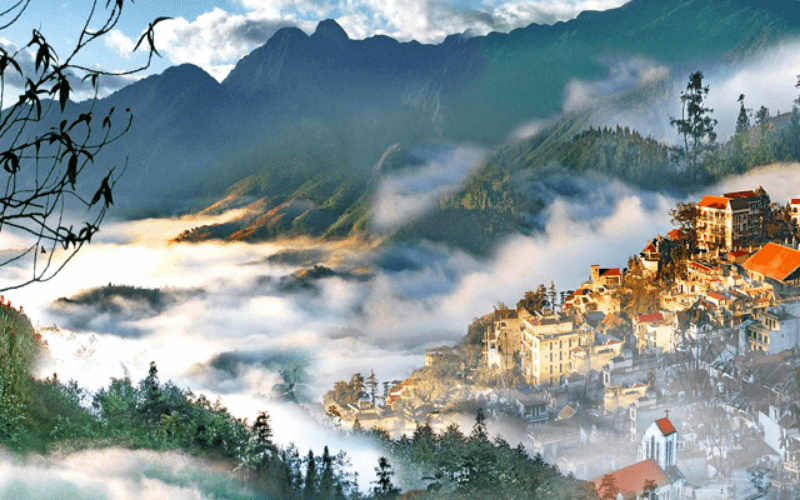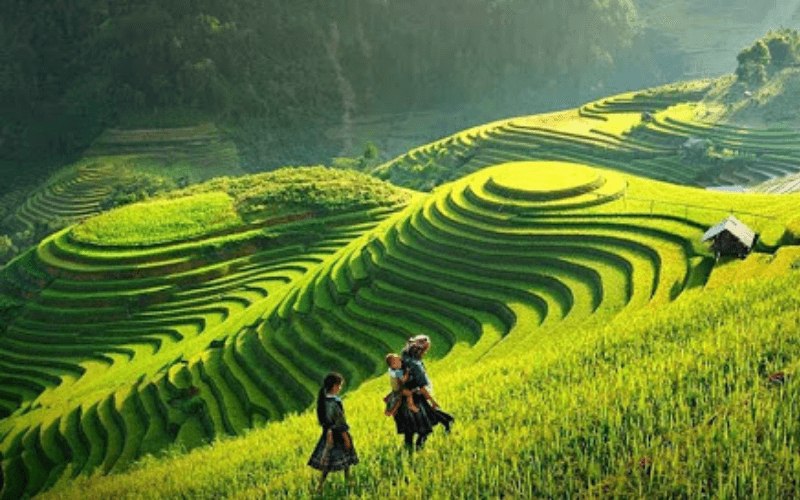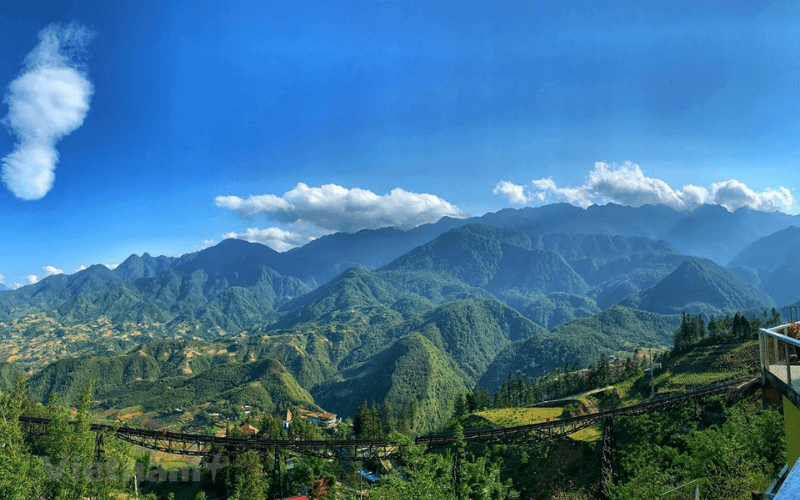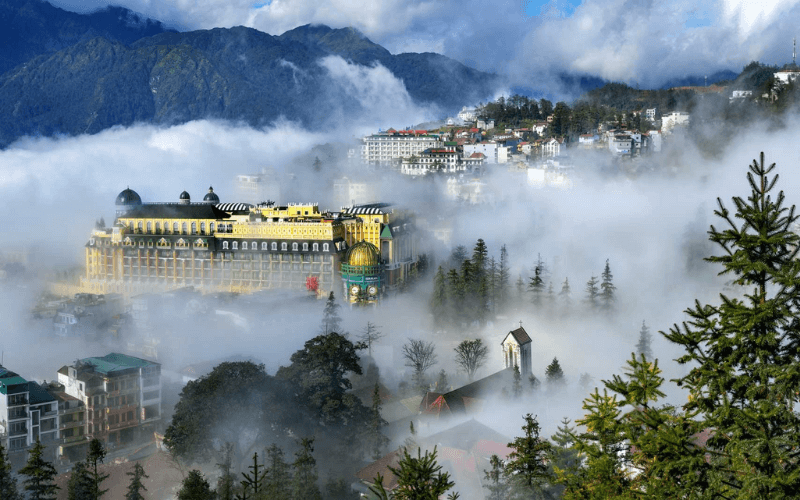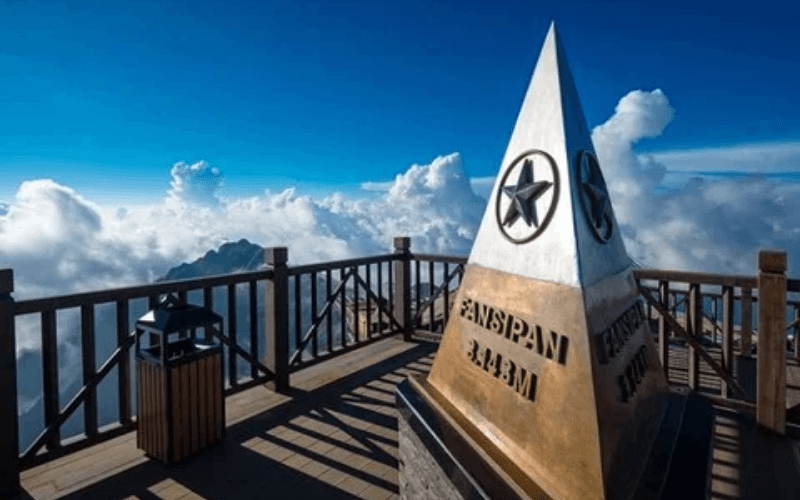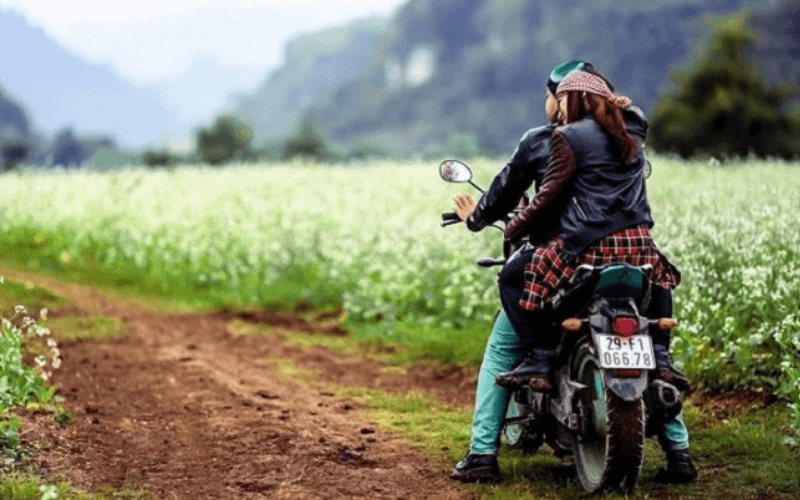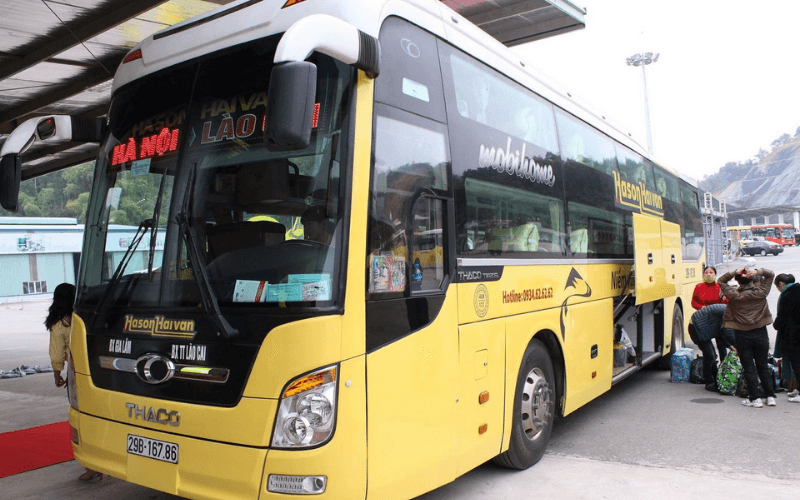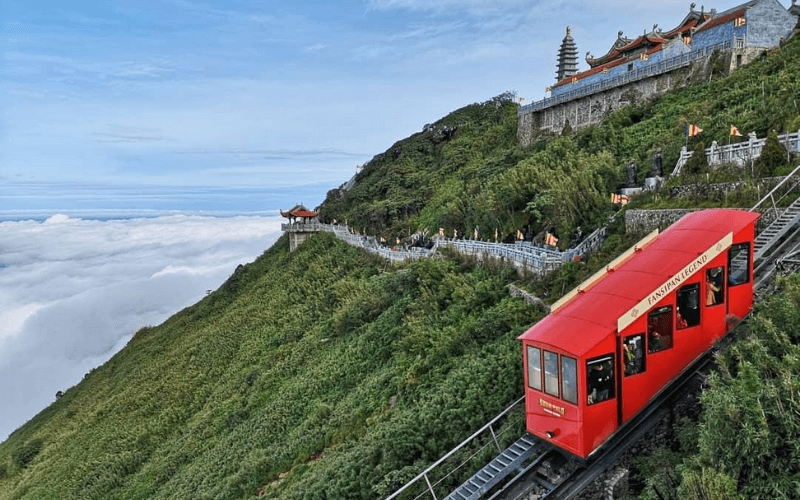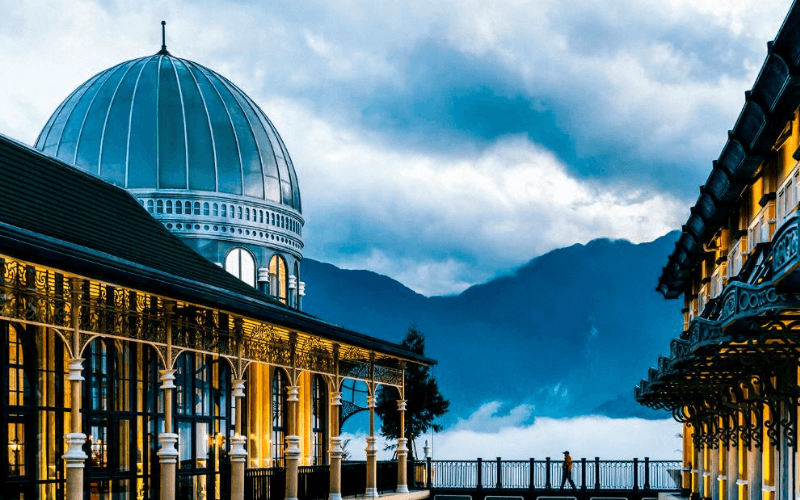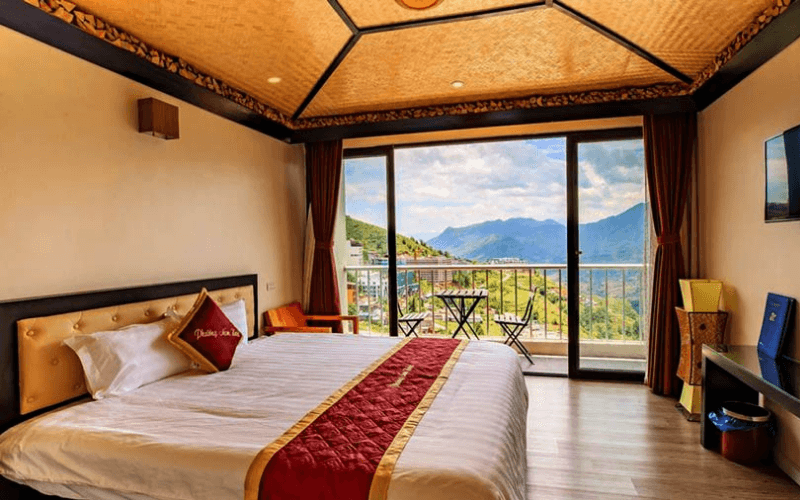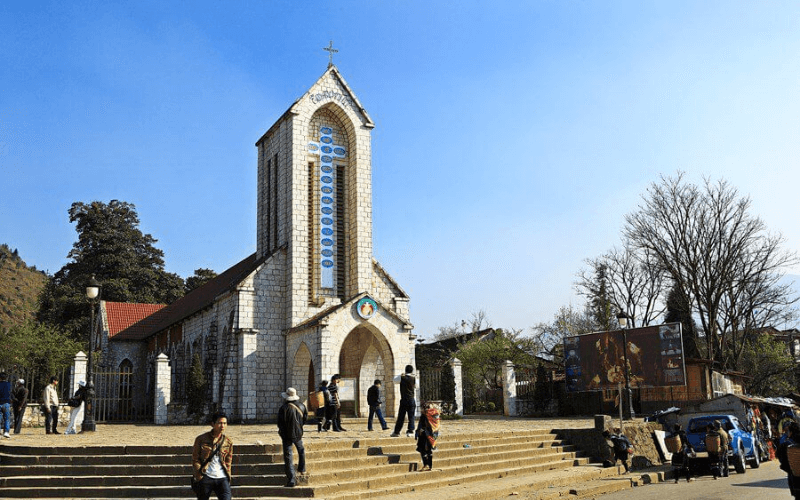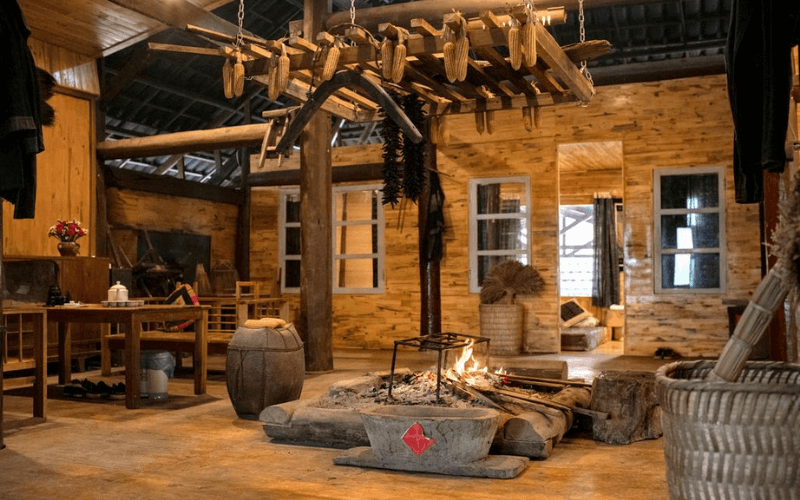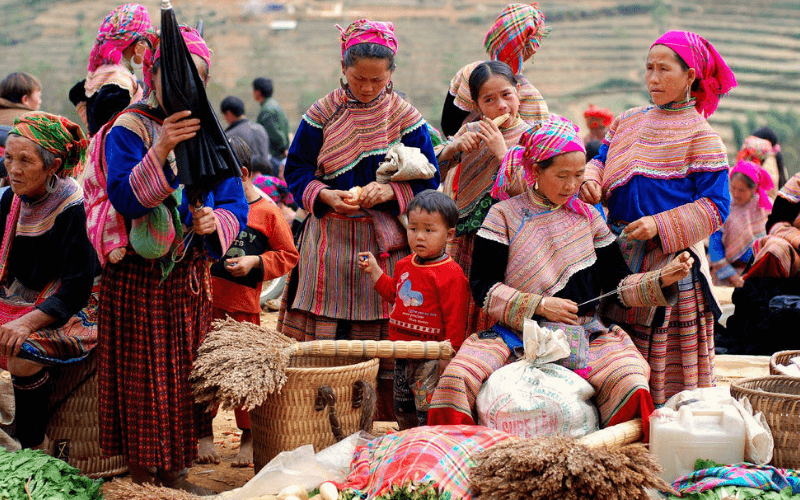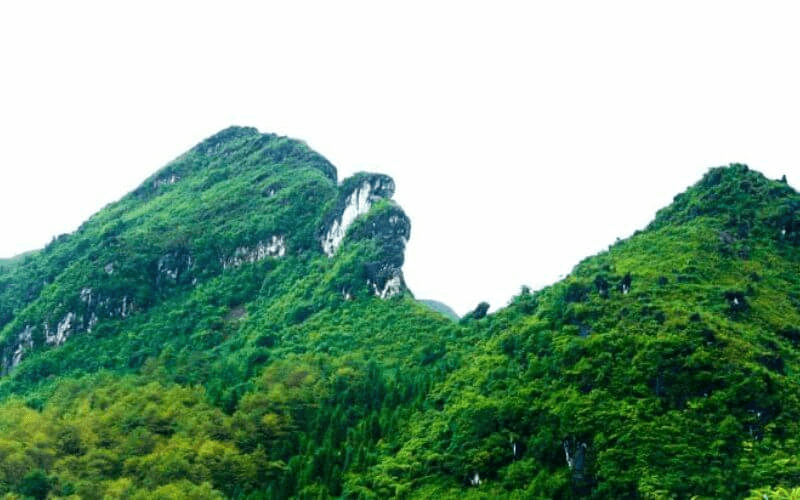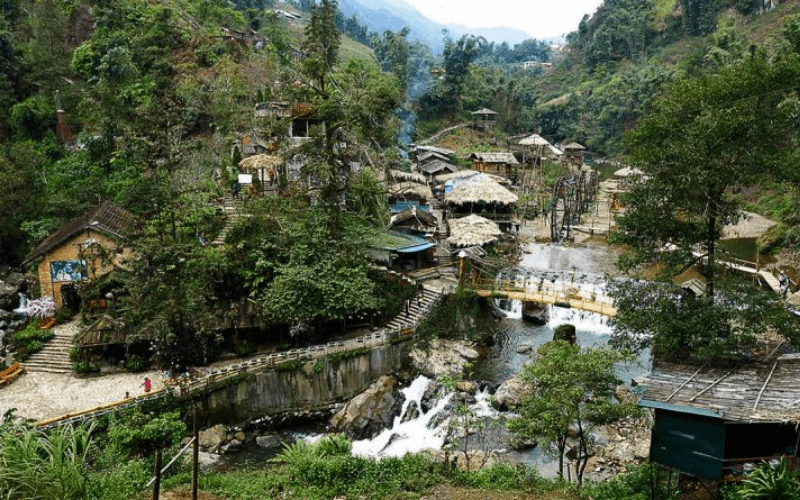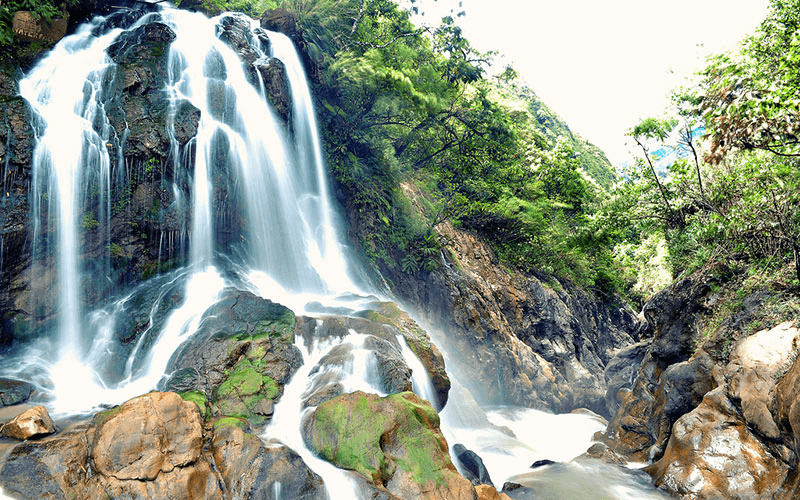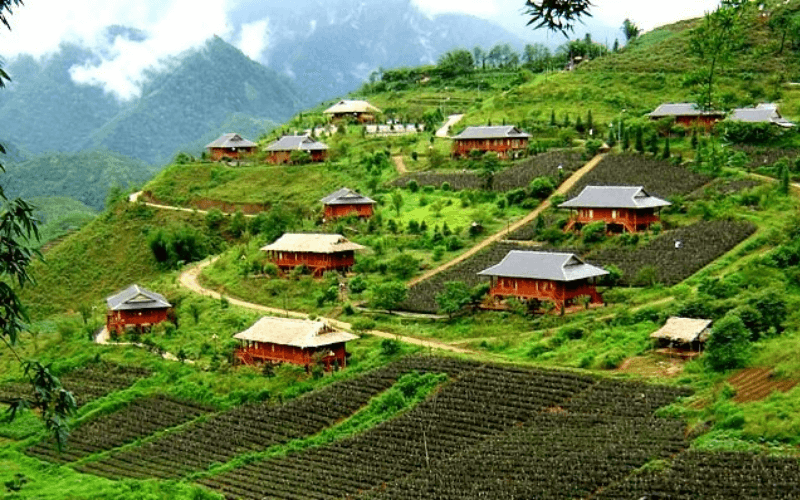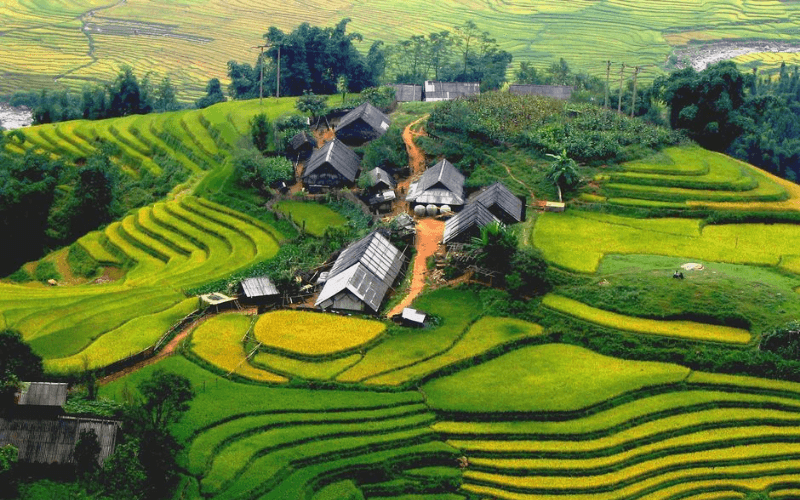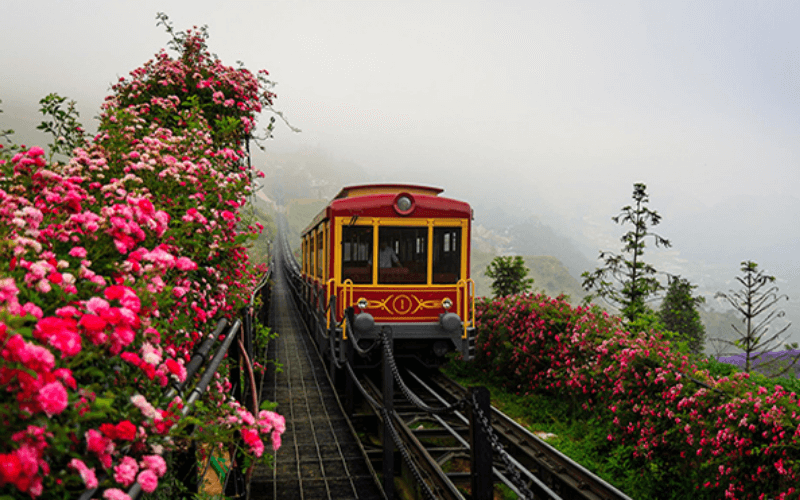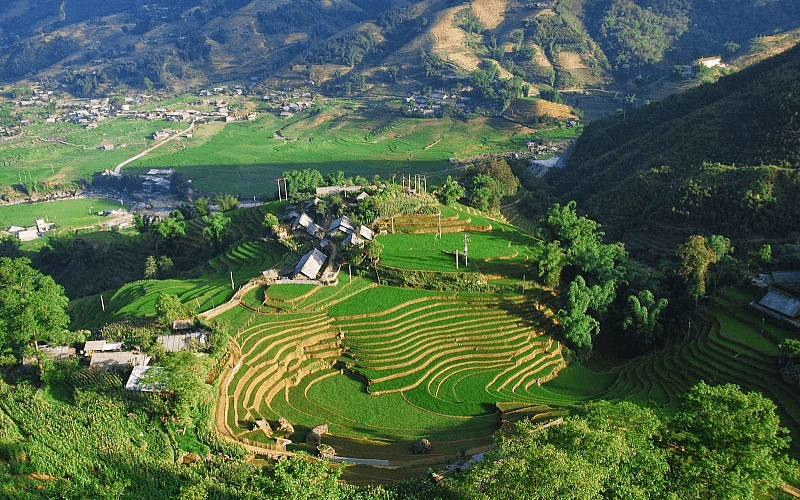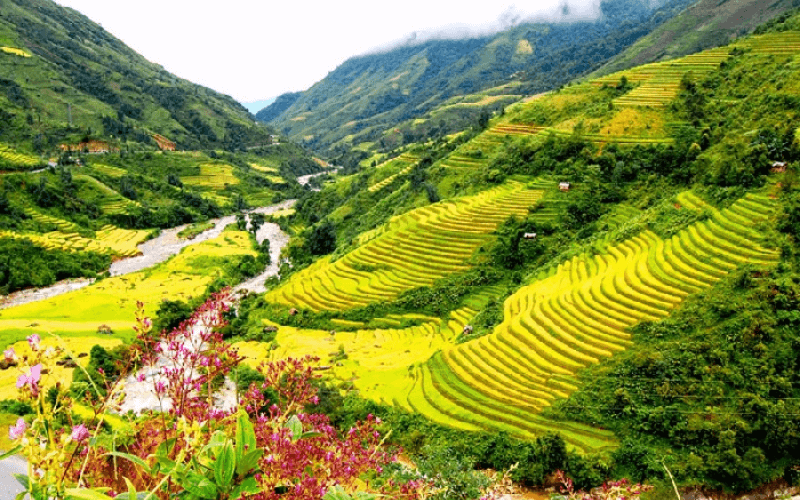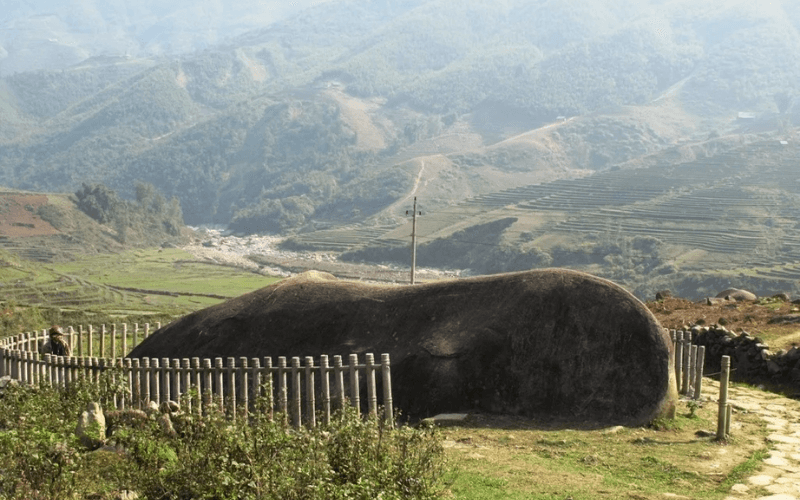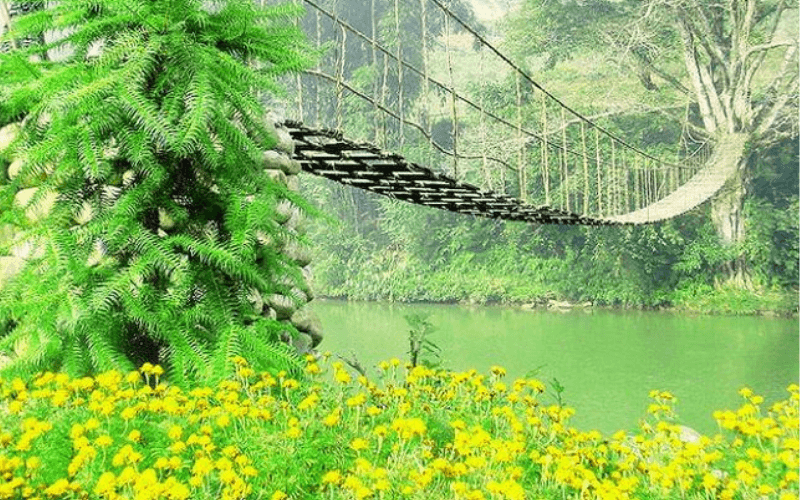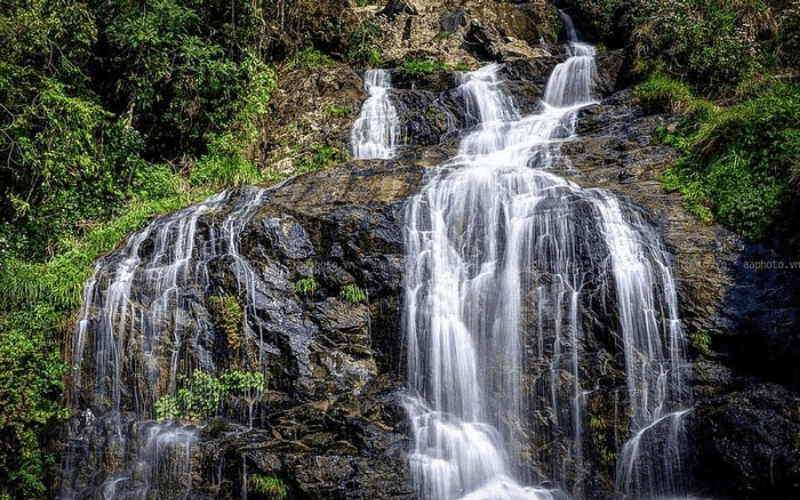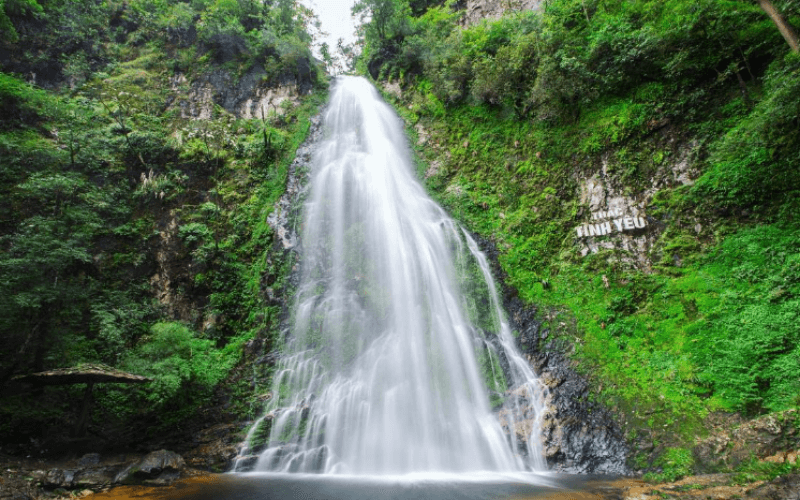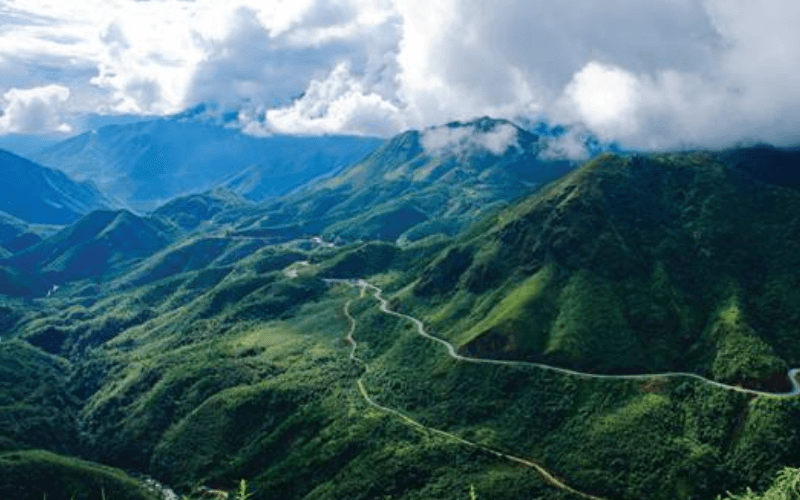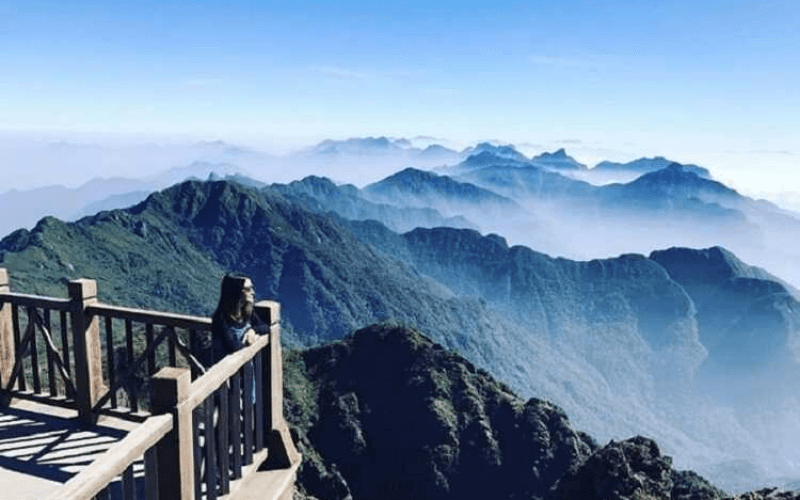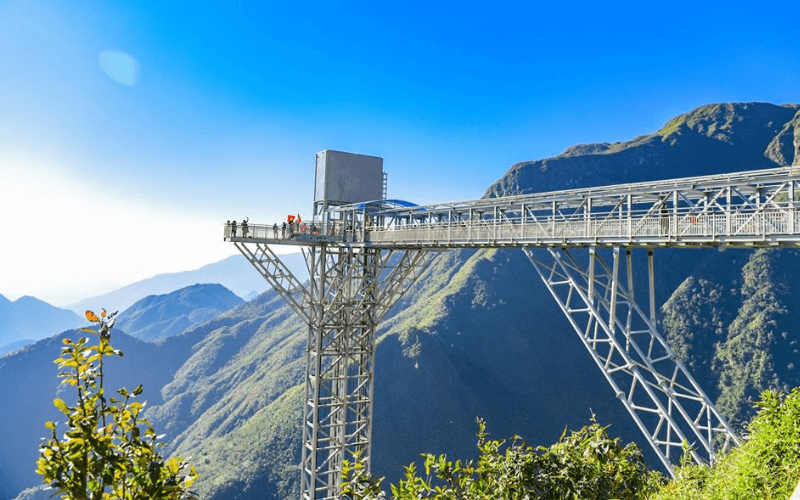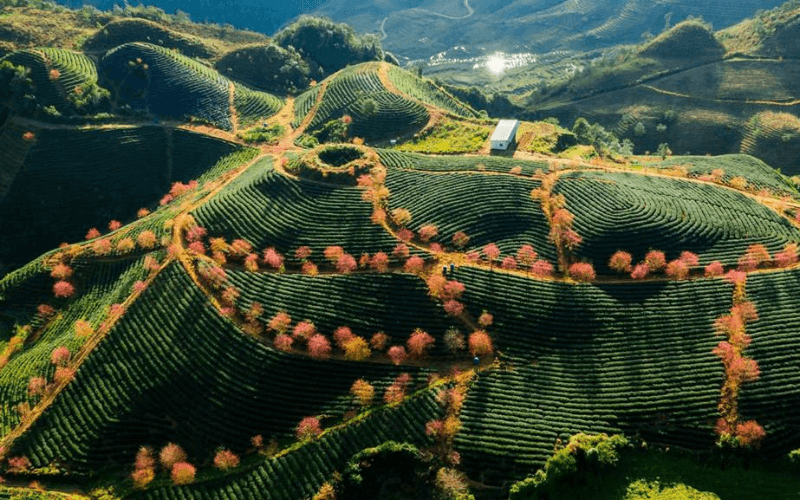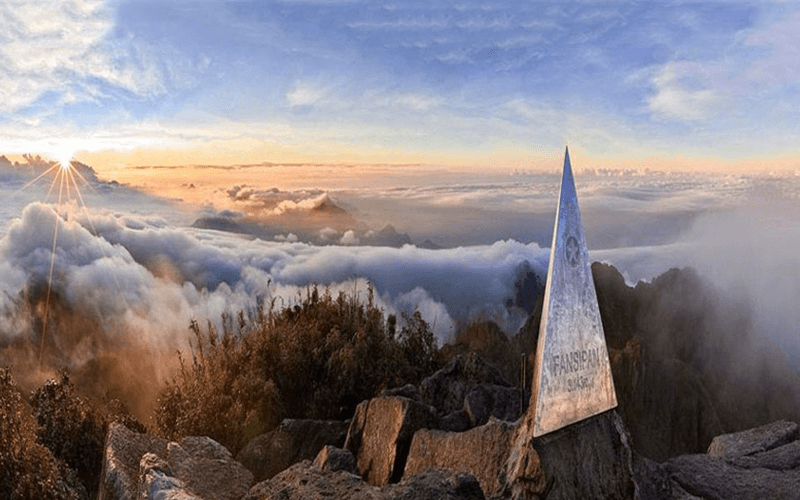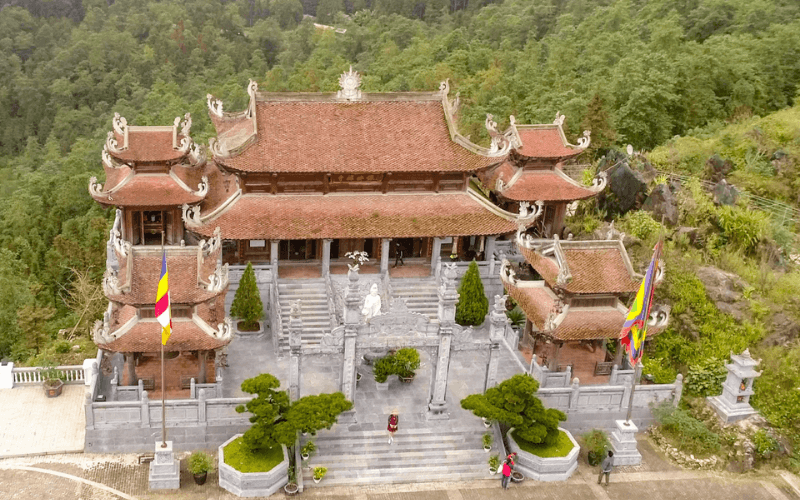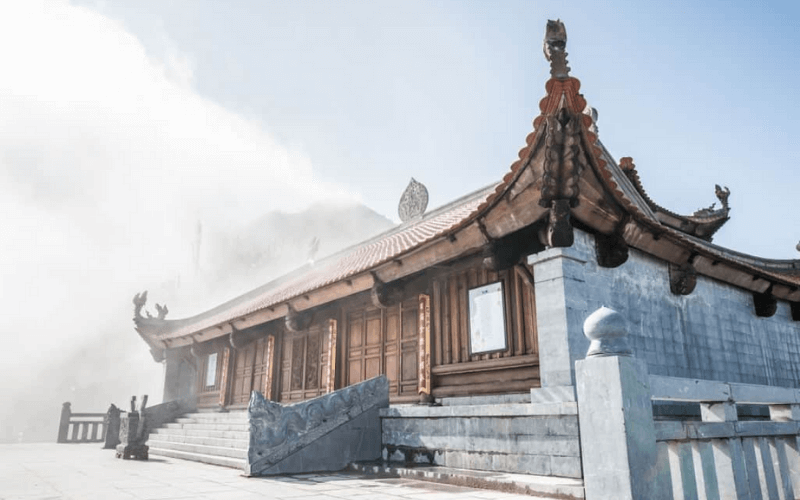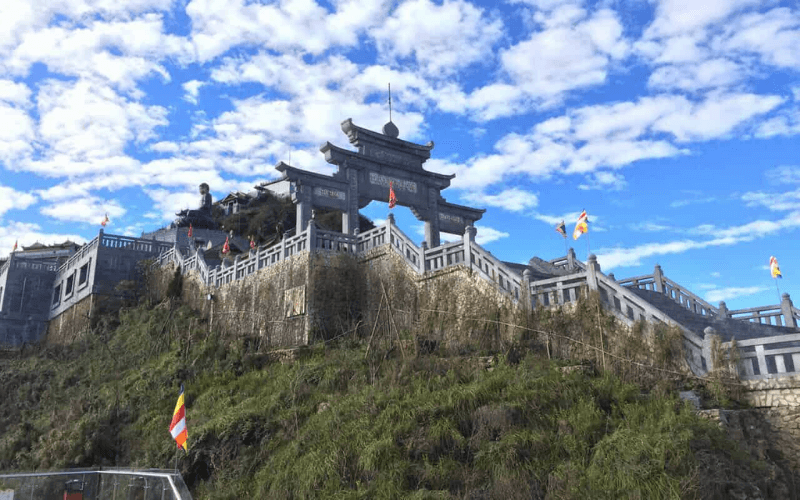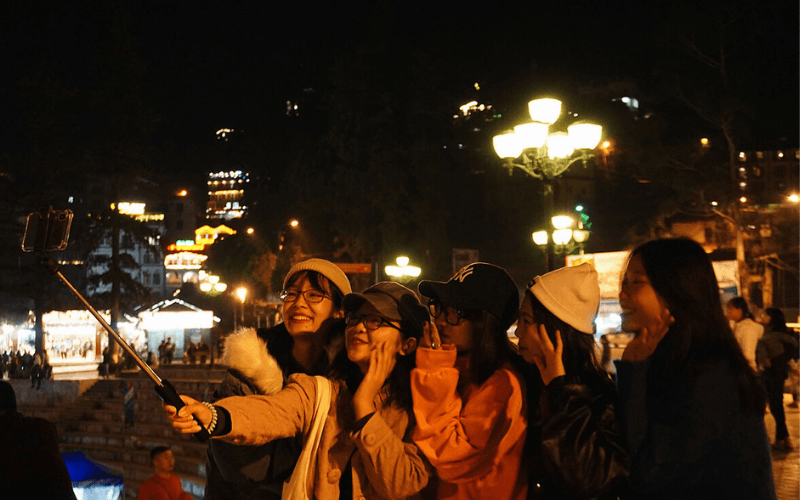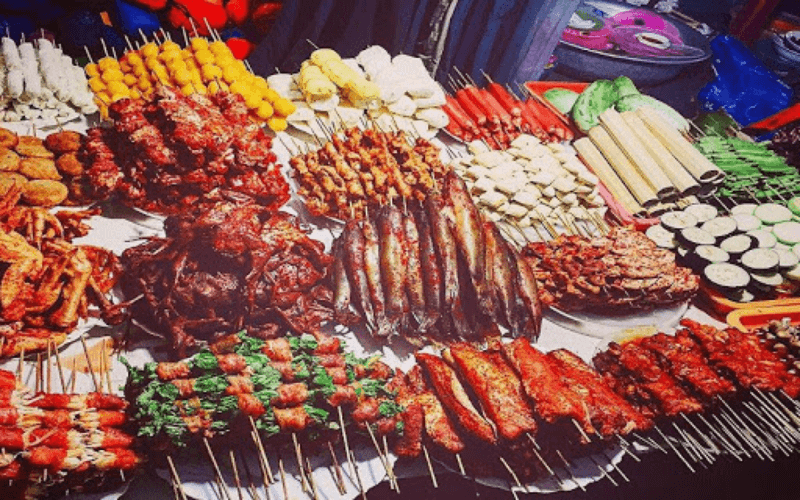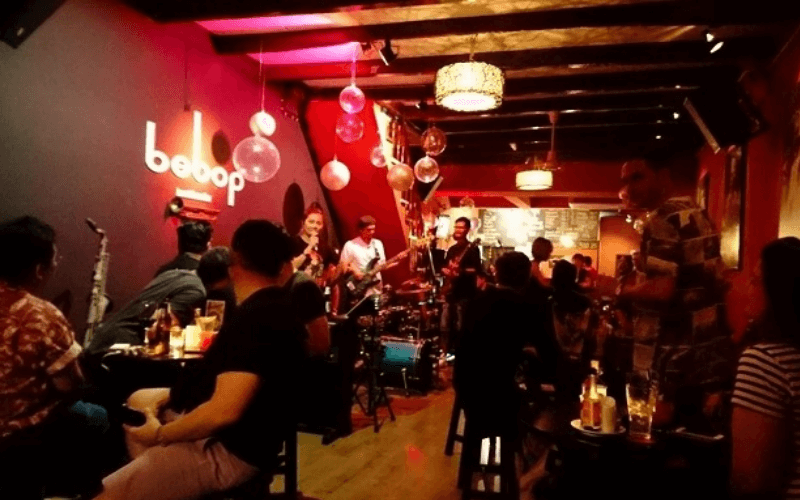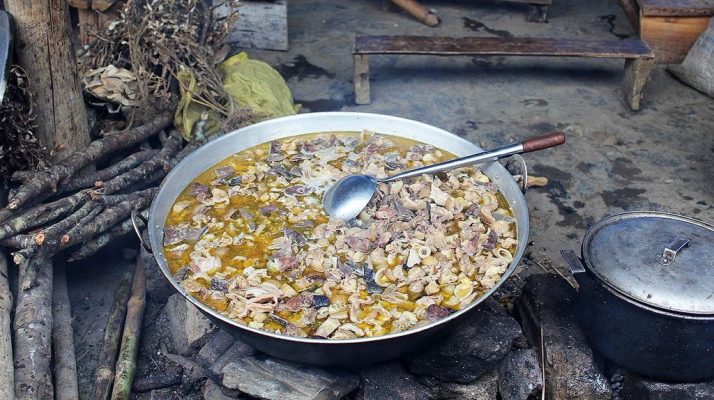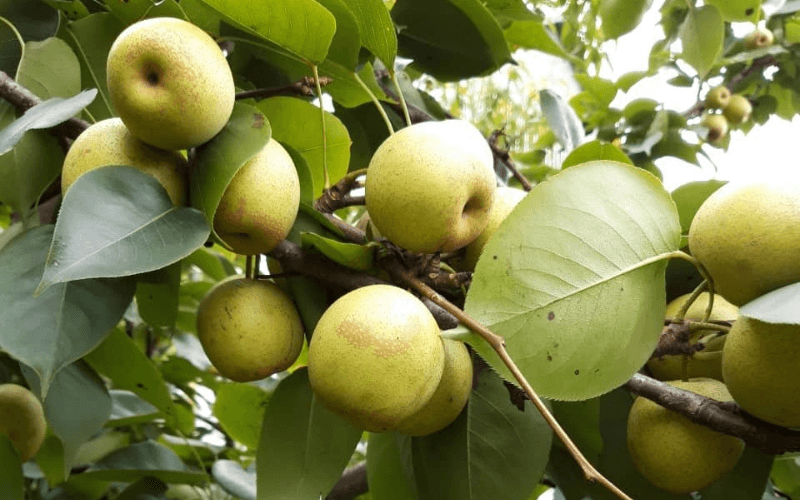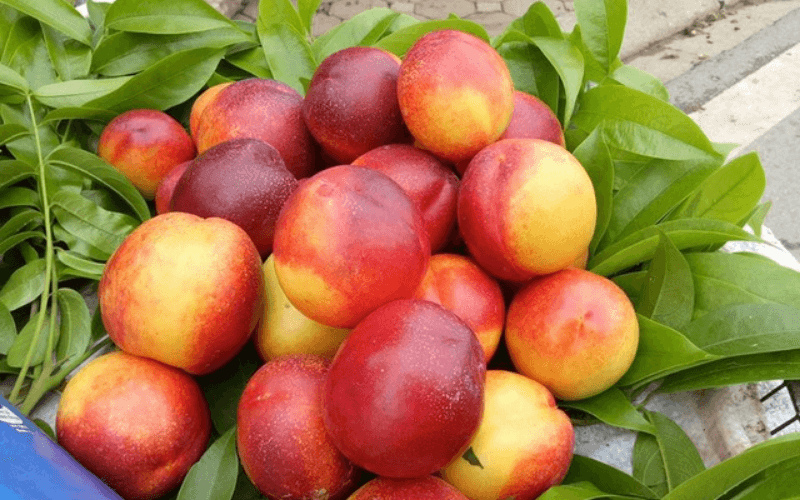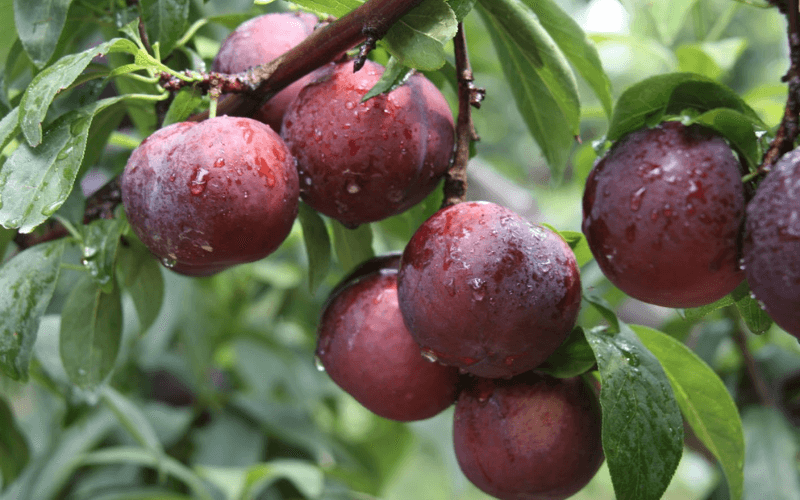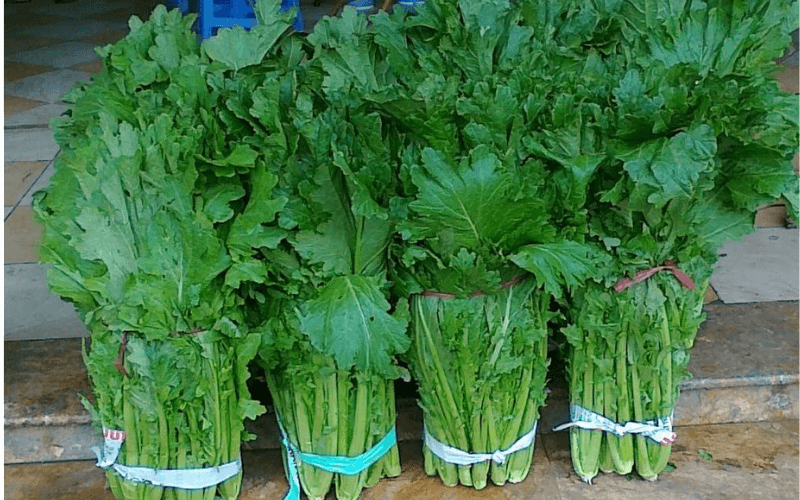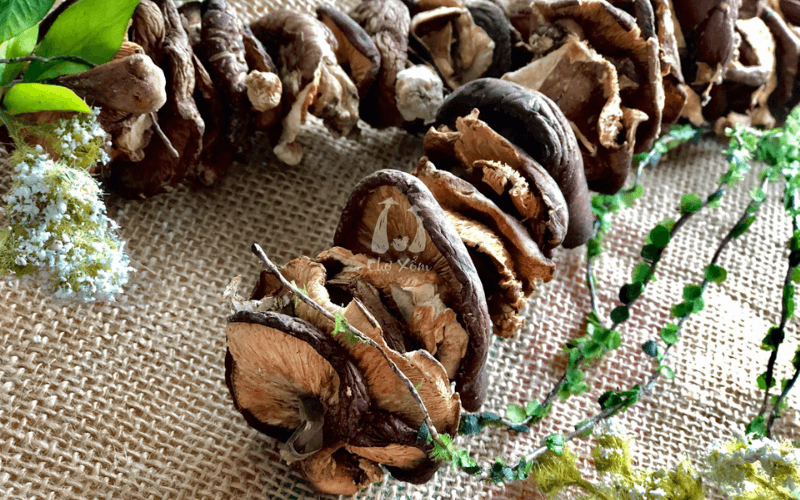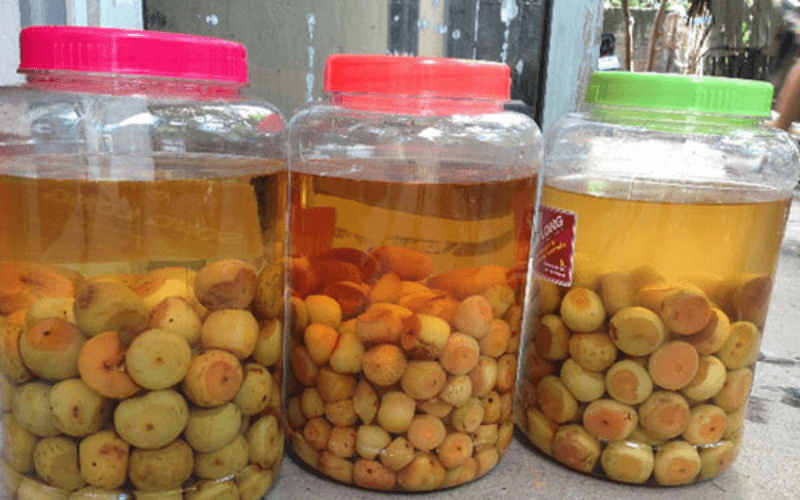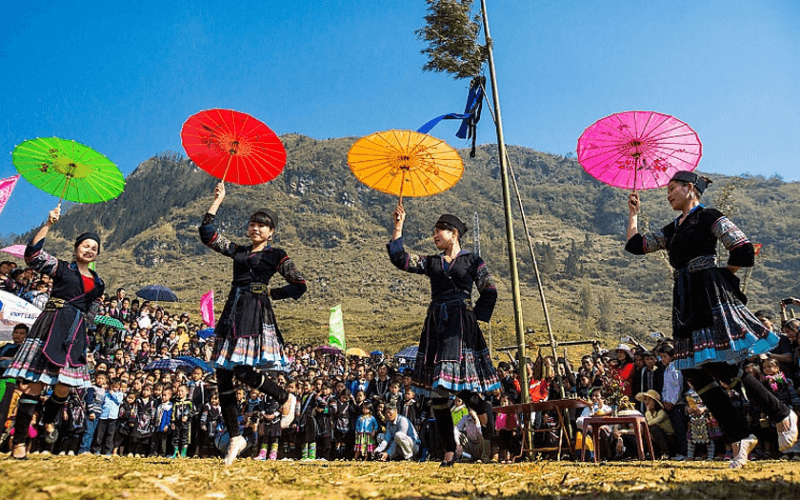Sa Pa is a highland town in the Northwest of Lao Cai province with the famous place is the top of Mount Phan Xi Pang, which is considered the roof of Indochina. Located at an altitude of 1600m above sea level, Sa Pa has a temperate and subtropical climate, cool air all year round. The weather in Sa Pa has four seasons a day: the morning is spring weather, the noon weather is like summer, usually with mild sunshine, the climate is cool, the afternoon has clouds and dewfall creates a feeling of coolness like autumn sky and night is the cold of winter. Let’s find out some information about the SaPa travel experience.
Table of Contents
Introduction to Sapa
Located in the northwest of the country, Sa Pa is a highland town of Lao Cai province, a land of humility and quiet but hides many wonders of the natural scenery. The natural landscape of Sa Pa is combined with human creativity along with the topography of the mountains, the green of the forest, as the picture is arranged in a harmonious layout creating an area with many scenes with attractive poetic colors.
The name Sa Pa is derived from Mandarin. In Mandarin, it is pronounced SaPả or SaPá, or “sandy beach” because before SaPa Town was named. There was only one sandy beach where indigenous people often had markets. From the two words “Sa Pả ”, Westerners pronounce without accent, become Sa Pa and they wrote in French those two words as “Cha Pa” and for a very long time after that people used “Cha Pa” as a Vietnamese word. Later, this word was unified as Sa Pa.
Sa Pa town at an altitude of 1,600 meters above sea level, 38 km from Lao Cai city and 376 km from Hanoi. In addition to the main road from Lao Cai city, to reach Sa Pa, there is another traffic route, Highway 4D connecting from Binh Lu commune, Tam Duong, Lai Chau. Although the majority of residents in Sapa town are ethnic minorities, the town concentrates mainly on Kinh people living on agriculture and tourism services.
Although located in the North of Vietnam, it should have a humid tropical monsoon climate, but because of its high terrain and close to the tropics. Sa Pa has a humid, temperate subtropical climate, with cool air around the year. In the summer, the weather in the Town one day seems to have four seasons: the morning is spring, the afternoon is summer, there is sunshine, the air is cool, the afternoon has clouds and dewfall, a cold feeling like autumn sky and night is winter cold.
The history of the land of Sa Pa
After conquering Sa Pa in 1887, the French colonialists expanded the area Hung Ho – Sa Pa into a resort. They brought some French contractors such as Hautefeuille, Lapiques, Alvaro together with the French engineer force and Vietnamese workers to exploit construction materials, stone, wood, sand,… Mobilized thousands of workers from lowland, tens of thousands of local villagers and prisoners in Sa Pa prison participated in the construction.
Since the establishment of Lao Cai province (July 12, 1907), the Sa Pa area was formed, including two communes, Binh Lu and Huong Vinh. In the 30s of the twentieth century, Sa Pa changed to a county, including 37 villages and a town with 1020 households.
By 1915, there were the first two cottages made of wood built by contractor Hautefeuille. Then, there are three major hotels: Metropol, Pansipan, Hotel Duy Xang, and hundreds of other villas that have also been erected for the French resort.
When the resort was formed, the infrastructure was also built by the French. In 1925, Cat Cat hydroelectric station was built. In 1930, asphalt on the inner-city road and Lao Cai – Sa Pa road, a clean water supply system was built to serve the town area. At the same time forming Sa Pa town residential area. In addition to the Vietnamese, there were also Chinese and French, then forming street names such as Pho Khau, An Nam, Xuan Vien.
By 1943 Sa Pa had about 200 villas and houses built by the French, flower gardens, playgrounds, plantations as well as tourist spots such as Stone cave, Silver waterfall, Cloud bridge,… However, resorts, hotels, and offices are now no longer because most of those buildings were destroyed according to the policy of scorched earth resistance in 1947 and the border war in 1979.
In 1954, peace was restored in the North Viet Nam, Sa Pa became a resting place for all working classes. But Sa Pa has only really reopened to international tourists since 1992.
On September 11, 2019, the Standing Committee of the National Assembly passed Resolution 767 / NQ-UBTVQH14 on the establishment of Sapa town in Lao Cai province.
When should you travel to Sa Pa?
The annual average air temperature in SaPa is 15 ° C. In the summer, the Town does not suffer from the intense sunlight like the coastal plains, about 13 ° C – 15 ° C at night and 20 ° C – 25 ° C during the day. Winter is often cloudy and cold, the temperature sometimes drops below 0 ° C, sometimes with snow. The average annual rainfall here ranges from 1,800 to 2,200 mm, most concentrated in the period from May to August. Reading this information you can also have the answer to the question “What time should travel SaPa”. There is some option for you as follows:
- Spring is the season where all the Northwestern mountains and forests have the appearance of peach blossoms, plum blossoms, and Sa Pa is not an exception.
- The golden terraced fields that captivate many visitors will usually appear from mid-September to October. On this occasion, you can combine the locations into a wonderful rice field. From Lao Cai to Y Ty to see A Lu ripe rice, go to Muong Hum to Sa Pa for a vacation. Then follow O Quy Ho to the scenic beauty of Mu Cang Chai terraced fields.
- The period from May to August is the rainy season, this time Sa Pa seems to be the most brilliant by the blooming flowers.
- From the end of December to Tet is the time when Sapa is very cold because the North moves in winter. If you enjoy feeling the cold as well as (if lucky) watching the ice and snow in Sa Pa, you should come here at this time.
Guide to Sapa
About 300km from Hanoi and about 40km from Lao Cai City, to get to SaPa Town, there are only road means.
By Private vehicles
- By Car: With private car means, everything is relatively simple because the journey to Sapa has shortened the travel time a lot after the Hanoi – Lao Cai expressway has been put into operation. Travel time only takes about 4-5 hours, you should note that this route is an expressway. But there are still sections with no hard lanes and speed is limited. In addition, this route is now a fully installed surveillance camera system, you need to comply with the speed and lane to avoid fines at the end of the toll booth.
- By Motorcycle: Normally, if you only go to Sapa, you will not need to ride a motorbike from Hanoi. However, you have a plan to explore more places such as Bac Ha, Y Ty, or Mu Cang Chai, you should ride a motorbike. For motorbikes, you need to go to the old route QL70, which is now relatively reduced by passenger cars and trucks due to highways, so it is much easier to go.
By Public transport
From Hanoi to Lao Cai
- By Train: From Hanoi to Lao Cai is about 300km, you can choose a bed car or train. In the past, most tourists chose to travel by train because the travel time by train and car was the same. The space on the train was more comfortable and spacious. However, with all changes since the completion of the Hanoi – Lao Cai expressway, the number of tourists by train has plummeted. Most tourists choose to go by car because the time is reduced to only half (4 hours compared with 8 hours) than before. However, if you are not used to taking a long-distance car, choose a train because of its comfortable space. Especially for families with children, being able to walk and jump on the train is still much more comfortable than lying around in a car. In addition, for those who want to bring a motorbike from Hanoi to take advantage of other places besides Sapa, take the train.
- By Passenger cars: If you want to go fast or have many choices of time for daytime trips, choose to go by bed car to Lao Cai. Current travel time is only about 4 hours, up to where you can stay in Lao Cai city first or transfer to Sapa.
From Lao Cai to Sapa
- By Motorcycle: If you bring your motorbike to Lao Cai and then to Sa Pa, you will follow QL4D to go to Sapa. Small roads with lots of passenger cars and container trucks run (and even run at high speeds) so you should drive your motorbike very carefully. If you see these vehicles from afar, it is best to go very slowly or stop close to the curb. You should not try to compete, which will endanger yourself. Go to Sapa Town, remember to go at the correct speed, to turn turns (including curves), remember to turn on your turn signals, do not remove your helmet, do not go in the opposite direction,… There is always a traffic police station at the beginning of Sa Pa Town, the section turns to the lake to catch a motorcycle.
- By Passenger car / Taxi: From Lao Cai to Sapa about 40km, it takes about 1 hour if there is no traffic jam. From Hanoi, you can buy tickets directly to Sapa. If you go by car, some cars go straight to Sapa, some will stop in Lao Cai and use smaller cars to transfer passengers to Sapa to ensure that it is safe (due to the narrow Lao Cai – Sa Pa road, many steep slopes, and dangerous crabs). In addition, if you go to Lao Cai by train and a large group, you can rent a private car to get to Sapa. These vehicles are available right outside the gate of Lao Cai station, the price is agreed with the driver.
- By Bus: If you take the train, you will only be able to reach Lao Cai station. You will continue to move a small journey about 40km more to be able to reach Sa Pa Town. For those who have conditions or for those who travel in large groups, renting a private car will be the most convenient. However, for those who travel alone or want to save money, you can choose to go by bus. Right at the gate of Lao Cai station, on the left-hand side is the bus stop, 29-seat bus, and all seats, the bus also accepts that you bring bulky luggage on the bus, the bus ticket price is 30,000 VNĐ. The bus departs from Lao Cai station square and ends at Sapa church. The car is available very early, even the earliest train to the station is around 5:30. There is also a car ready to depart for the passenger terminal. This bus route usually stops to pick up passengers at stations in Sa Pa City. To the foot of the pass from Lao Cai to Sapa, there are enough passengers and then run straight.
Going back to Sapa
- By Motorcycle: Although Sa Pa Town is small, the tourist spots are quite far, from 2 to 20km. If you have experience riding a motorbike or car sickness, you can rent a motorbike in Sapa Town to facilitate your discovery of this place. This option is also a suitable way for you to go deep into the villages, and stop to take photos or actively do whatever you like. If you do not want to drive a motorbike but still want to sit on this vehicle to comfortably breathe fresh air, feel the cool air of Sa Pa, you should rent a motorbike taxi. Motorcycles in Sa Pa are available and many gathered around the church. You can rent a motorbike taxi each way, to tourist destinations or a package “contract” to take you around Sa Pa while you are there.
- By Walk: If you want to combine SaPa tourism and exercise, choose the walking plan (trekking) to most tourist destinations in Sapa. This is an option that many Western guests like, they often trek from the town center to the villages of Ta Van, Ta Phin, or Cat Cat. If you want to walk, prepare yourself a pair of shoes that are very light and smooth and have light water resistance before going to Sa Pa. High heels, leather shoes, or even flip flops are not suitable for this option.
- By Taxi: The taxi plan is suitable for families with young children, the elderly, or for those who just like to ride a car. Taxi prices in Sa Pa are usually negotiated between tourists and taxi drivers for each route (one way or round trip).
- By Tram: Tram service for tourists is licensed to run a test on some routes, the advantage of a taxi is that it can carry more people, open space is quite comfortable to be able to enjoy the view along the road. A disadvantage, It is a bit bad, so you can meet the dust.
From Sapa to Fansipan
To get to Fansipan fastest, the optimal option is to use the cable car. For those who love climbing and have time, you can sign up for Fansipan summit conquest tours from 2-3 days. Fansipan cable car ticket price depends on the buyer if you plan to buy tickets online in advance for convenience and without having to queue.
Go up to the cable car station
With a distance from the center of Sapa about 2km, you have many choices of means to get here.
- By Walk: Walking 2km is not a big deal but is usually only chosen by Westerners or sports enthusiasts. In addition to walking along a route with other vehicles traveling with it is not guaranteed to be safe.
- By Train: The train line crosses the Muong Hoa valley with a ticket price of 100,000 VNĐ, you only take about 5 minutes to reach the cable car station. Tickets can be purchased at Sun Plaza.
- By Taxi: If you go alone, you can take a motorbike taxi. Whereas traveling with many people, you can choose to take a taxi to save costs. In addition, for those who rent a motorbike as a means of transportation in Sapa, you can use it to get here.
Boarding at Do Quyen station
The cable car to the top of Fansipan is about 6km long with a glass cabin around for you to enjoy the scenery. This cable car will take you to Do Quyen station, about 600 steps from the top of the mountain.
From Do Quyen station to the top
Climb 600 steps or choose to take another mountain train, which depends entirely on your health. The mountain train route will take you to Truc May station, only about 50 steps to climb, and suitable for guests with the elderly and young children. In addition to those who are not in good health, you should also go by train. Because the air above 3000m is relatively thin, many of you are not used to altitude sickness.
Staying in Sapa
In recent years, Sa Pa has made changes in the way of doing tourism such as building a tourist-friendly environment, saying no to street vendors, and stalking tourists. Along with that, accommodation facilities in Sa Pa are increasingly invested and developed. SaPa is also able to meet tens of thousands of tourists coming at the same time.
Book hotel room
There is one thing that you have not traveled to Sa Pa should remember. The room rates in Sa Pa are especially high on long holidays such as April 30 or September 2. On occasions like these, the price of a double room of a normal motel can be up to > 1,000,000 VNĐ, which is equivalent to the price of a 3-4 star hotel but still in full room condition. That is because the number of tourists flocking to Sapa on these occasions is extremely large. The prestigious motel or hotels in SaPa have been booked for a long time, so these motels have the opportunity to cut. Experience is that if you plan to travel on those occasions, book online 1-2 months in advance through reputable online booking networks such as Agoda or Booking. When you have paid through these reservation networks, the hotel will always keep your room.
Hotel
In Sa Pa, there are hundreds of hotels invested with a quality of service from 1 star to 5 stars. The more beautiful the hotel is, the higher the price, with the lowest about 1,000,000 VNĐ.
Hostel/motel
In Sa Pa, some small hotels are only of the same quality as motels. But these still attached as hotels will make many visitors who have never been to Sa Pa find it difficult to choose. These hostels/motels usually have room rates in the range of 200,000-300,000 VNĐ for weekdays and up to 500,000 – 600,000 VNĐ per weekend.
Homestay
Type of tourism – community service (homestay) was first implemented in Ta Van in 1997 by a veteran. Later, realizing the concern from tourists and the support from the tour guides, the man went into business and provided this service to them. Gradually, the model is replicated in the tourist villages of Sa Pa as today. Ta Van village has more than 150 households living and more than 50 households registered as a homestay tourism model.
When you come to the homestay tours, you will have the opportunity to experience living with the host family, learn the customs of upland people at a much lower cost than hotels.
Tourist destinations in Sapa
Sapa Stone Church
The old church is also known as the stone church or the Church of Our Lady of the Rosary located in the heart of Sapa Town, built by the French in the early 20th century. The French architects have chosen very carefully the terrain to build. The Church of Our Lady of the Rosary is located in a prime location with the back of Ham Rong mountain shielding, in front is a large, flat land area, able to develop many cultural works for communal activities. The relic can be observed on all four sides, along with two other architectural works also built by the French, namely Chu Cau villa (now Hoang Lien Hotel) and the old district party committee (now is headquarters of the Lao Cai Tourist Information Center) forming an equilibrium triangle with a distinct French-style architecture.
Choosing the direction of the church has an important spiritual significance for Catholics: The head of the monument turns to the East, in the direction of the rising sun. It is the direction to welcome the light of God. At the end of the church (the Bell Tower area) in the west, the birthplace of Christ.
The shape and architecture of the Church were built in the shape of a cross according to Roman Gothic architecture. The architecture shown in the roof, the bell tower, the dome,… is the pyramid to create the graceful flight. The entire church is built of hewn stone (walls, floor, bell tower, churchyard, surrounding embankments) are linked together by a mixture of sand, lime, and molasses. The wall of the right cross is made of rough, flowing stalactites to increase the natural beauty of the monument. Tiled roof, ceiling made of lime straw (now renewed). The ceiling in the Bell Tower (near the bell) is a mixture of lime, straw, and iron, not yet repaired.
With a total area of more than 6,000 square meters of the church campus, Sa Pa Church has enough room for the arrangement of areas including Church area, parish house, house of priests, ranchers, angel houses, front yard section, fence, Holy Garden. A row of parish houses built parallel to the church area includes 5 rooms.
The angel house includes a basement, three upper floors that are a place to cure the sick, the overnight traveler, the corpse area, the toilet building, the kitchen, the holy garden with two tombs.
The church area consists of 7 compartments wider than 500 m2. The bell tower section is 20 m high, has a 1.5 m high bell, cast in 1932, and weighs 500 kg. The echo is within a radius of nearly 1km. Currently, on the surface of the bell, there is still a clear casting record. The number of people donating money for the casting of the bell. The wooden bell holder remains the same after the restoration.
Rosary Church in the center of Sa Pa is the meeting point of many visitors every time they have the opportunity to come here. Despite several were restoration and renovation due to war and the devastation of nature. The church still retains the charm and soul of religious architecture.
Since it was built up to now, Sa Pa church has always been the place where many traditional cultural activities of the ethnic groups take place. Right in front of the Church is the courtyard and circulation area, where every Saturday night. Unique cultural activities of ethnic minorities are held, which visitors are familiar with the name ” love market”. With flute, leaf trumpet, fervent lips, and sagging tunes of the Mong and Dao ethnic. Boys and girls will attend together in the praying activities taking place on weekends. Creating the space of The church is more sparkling, fanciful, and has a strange charisma.
Sapa Museum
Sa Pa Museum is located on the Campus of the Lao Cai Province Tourism Promotion and Information Center in Sa Pa. Sa Pa Museum was established and operated under the model of the Arcachon Tourist (Bordeaux – France) since 2007. Sa Pa Museum currently holds about 200 artifacts, models, and many publications, movies, and documents on ethnic groups in Sa Pa such as the H’Mong, Tay, Giay, Xa Pho, Ha Nhi, and Red Dao. Here, visitors will learn about the history of Sa Pa Town, as well as explore the productive working life, belief activities, culture, and costumes of each ethnic group.
Sapa Market
Update information: By the end of 2014, Sa Pa market was moved out of the town center, about 1km from the old market and next to the bus station. Due to having to walk a bit far from the center, the market now does not attract as many tourists as before.
According to the custom of the ethnic people in Sa Pa, the market is held five days a day like people in the lowlands. Then, when the French came here, according to the Western calendar, they switched to weekends for convenience. Dao people often go to the SaPa market on Saturday night, that evening they stay at the market and sing “Giao duyên” through the night until morning. And the next morning on Sunday, They went to the market to shop and went back to the village. As for H’Mong people, on Sunday morning, they go to the market, but gradually they imitate the Dao. From Saturday afternoon, dancing and singing the trumpet in the evening, then they have a relationship until Sunday morning. To this day, the habit is still there and the SaPa market still has more Dao figures. On Sunday morning, on the roads leading to the Town, many Dao people came from the market to the village and H’Mong people went back from the village to the market.
In the past, the SaPa market was very crowded. The market is held outside on a large lot of land. Men ride or lead horses, shoulder rifles, and waist knives wrapped in bamboo boxes. They found a place to tie the horse and did not forget to take off the bag of grass that was brought down on the horse for him to chew on because the market is still long. People pack on the back of shiitake mushrooms, firewood, rice, corn, carry bamboo, and large wooden trunks to the market in exchange for meat, salt, needle thread, cloth,… Of the French, they built a very large wooden market, with thin plywood roofs like the H’Mong roof, on the very land of today’s concrete market. One left corner of the market is where the horses are tied, and where vegetables are now the rows of horse feeding troughs called horse overflows. Down a bit more is the path leading to Cat Cat village and Chinatown.
By 1995, the old market was demolished and a new market was built with the modern two-story concrete. Although the market has just been built firmly on the surface. People like to sit and walk around the surrounding sidewalks, to the churchyard, to trade and chat. So Sa Pa market means a long and wide area, along the streets of the old town area. And so SaPa market was formed, holding many tourists’ feet with the warmth of human love. In Sa Pa, visitors will enjoy so many new things about nature and the people here.
Sa Pa Night Market
Sa Pa Night Market is a tourism product serving tourists, promoting the development of the “smokeless industry”, creating conditions for indigenous people to have opportunities to trade and increase income. Sa Pa Night Market operates from 7:00 a.m. to 11:00 p.m. all days of the week. Especially from 9 pm every Saturday, Sa Pa night market organizes cultural, and entertainment activities. The venue is on N1 Street near Sa Pa Cultural Market.
Ham Rong Mountain
Ham Rong Mountain is a mountain located in the majestic Hoang Lien Son range with the meaning of “Mouth of the dragon”. Ham Rong is one of the few mountains in Vietnam with clear and beautiful pictorial elements.
Located close to Sa Pa Town, nearly 2000m high, around Ham Rong mountain there are many different types of mountains; closed evergreen forest, with all year round green broadleaf trees and all kinds of vines, dense bushes, mixed broadleaf and coniferous forests,…
The mountainous area is characterized by thin, less dense forests, sometimes with alternating broadleaf trees. It is higher than the sub-tropical moist evergreen closed forest with the characteristics of a thin forest; few layers of coniferous flora develop. At the height of the mountain, there are almost no trees left, only the speckled mountains (dwarf bamboos) and dust wind blowing.
Sky gate on Ham Rong Mountain
On the way to the gate, looking ahead, you could only see a vast blue sky. While looking at the bottom of the clouds and the moon. End of Heaven Gate 1, stop at heaven gate 2 1700m high to see the dragon’s head. Following the cliff is the way to heaven gate one and two, you will stand on the cliff, ecstatic in the feeling of flying, and looking down at the whole city in the mist. Here heaven and earth meet, there is a “cloud guy” who does not hide his dream with “her rock”, under the shimmering light. Come here not only to enjoy the scenery of heaven and earth but also enjoy the fresh air of Sa Pa heaven.
Cloud field on Ham Rong mountain
At an altitude of 1,800m, visitors can see the magical SaPa valley disappearing in white clouds, fluttering with the wind. This is a place for visitors to capture beautiful panoramic photos of Sa. Pa.
Cat Cat Village
Cat Cat village is a Mong ethnic village in San Sa Ho commune, about 2 km from Sapa Town. This is an attractive tourist attraction of Sa Pa in particular and Lao Cai in general. The Cat Cat Village was formed in the middle of the 19th century by a group of ethnic minorities.
Near the residential areas, they also grow rice and corn on the terraced fields entirely by manual method. They know how to cultivate, breed, and preserve quite well many traditional crafts such as growing cotton, flax, and weaving. This place deserves to be considered as a cultural tourist destination, an interesting eco-tourism for tourists, and a satellite community cultural tourist destination of Sa Pa.
Tien Sa Waterfall
Cat Cat waterfall, also known as Tien Sa waterfall, is one of the tourist attractions located in Cat Cat village. San Sa Ho commune, just 3 km north of Sa Pa town center. Since the 1920s of the 20th century, a central hydroelectric plant was formed next to Cat Cat waterfall and until now it is still operating well.
Ta Phin Village
As one of the attractive community ecotourism routes of Sa Pa town, Ta Phin has become the destination of many tourists when visiting Lao Cai. At the end of winter, the road to Se Seng village (the community tourism center of Ta Phin) is covered by clouds.
Ta Phin village is about 17km northeast of Sa Pa town center, consisting of two ethnic groups Dao and Hmong. About 1km from the headquarters of the People’s Committee of Ta Phin commune to the North. There is a limestone mountain range, a branch of the Hoang Lien Son range. In this mountain range, there is a small mountain, at the foot of the mountain, a cave opening, about 5m high, about 3m wide, opens a path through the ground.
Ta Phin village has a beautiful natural landscape, cultural features imbued with the national identity of the Red Dao people with famous brocade craft. Coming to Ta Phin village, you can visit Ta Phin cave right there. In the cave there are many stalactites, creating interesting shapes such as dancing fairy pictures, sitting elves, fields far away, sparkling forests,…
Lao Chai Village
Lao Chai is a commune located in the widest and most beautiful valley – the place can be seen from Sapa Town or on the top of Ham Rong. About 7 kilometers from the town center, Lao Chai is not far away. Therefore many people walk from town to this village.
From the Town along Muong Hoa street through the bustling and busy streets. Visitors begin to experience different and authentic village life. Still follow the Muong Hoa slope, go on a winding road of the mountains parallel to the Hoang Lien range to reach Lao Chai. It is a fairly crowded village, located on a stream from the main road. From above, visitors can observe the simple lines of houses that are very close to each other, very characteristic of the “street” of the village.
Lao Chai is located deep in the valley. Surrounded by mountains and terraced fields. The fields here are ranked the most beautiful in Lao Cai and are one of the national landmarks. From the village, looking around is the Hoang Lien range of scholarly, the other side is the Ham Rong Range. Then to the lower level rice-growing terraces. The field extends to the door. It seemed that they were the steps connecting Lao Chai with the mountains to blend into the clouds to the sky.
From September onwards, until April next year is the “season” of Lao Chai. That’s when the best version. At this time, Lao Chai is in autumn. The terraced fields were towering from the deep valley, stretching to the middle of the sky, and the golden color of ripe rice. In autumn, Lao Chai not only has warm weather but also the season of golden rice.
Rose Valley
This is an ecotourism area invested for 3 years, designed with an ecological landscape with nearly a million roses, peaches, plums, crunchy roses in the United States, Taiwanese almonds. The whole area has 11 wooden stilt houses Pomu, natural stone roofing, harmoniously decorated interior, interspersed among beautiful French rose gardens, stilt houses all overlook the Lao Chai valley with terraced fields, all creating a picture. full of fancifulness. According to many experts, the ATI tourist area is qualified to serve customers. Coming to the Rose Valley from March to November of the year, you will enjoy the ecstatic scent of millions of roses blooming every morning. In winter, the peach gardens and plum gardens will give you the feeling of traveling in Japan on the occasion of the Lunar New Year.
Ta Van village
From SaPa town, down a winding trail in the middle of the mountain about 10km, to Ta Van commune. Many tourists still choose motorbikes to go to, because they can fully enjoy the natural scenery and countless other interesting things. It only takes about 100,000 -120,000 VNĐ, you can rent a motorbike in SaPa to explore.
According to the Hmong language, Ta Van means “Vòng cung lớn”. The village is as beautiful as a picture, with its back leaning against the Hoang Lien Son range, and in front of it is the clear Muong Hoa stream. From Ta Van, you can travel very conveniently to other famous tourist destinations of Lao Cai such as Lao Chai, Cau May, Ta Phin,…
In recent years, Ta Van has become one of the destinations for those who love to explore and experience. In the majestic space of sky and clouds, Ta Van hides many deep “eyes” – where people go up to find more “past pieces” of high mountain brothers who are both familiar and strange. In Ta Van, there remains the stone worshiping custom of the ancient Vietnamese. Across the stream, there is an ancient stone carving area with nearly 200 rocks of all sizes. Each rock-carved many unique images and patterns of the ancients. Every day in that space, people live and work, go to Sa Pa to sell brocade, go to the market, and talk to transplants.
Muong Hoa Valley
Located 10km southeast of Sapa Town, Muong Hoa is an attractive destination attracting tourist steps to the mountainous region. It is not difficult to recognize Muong Hoa, passing a pass along the mountain range, visitors will be “fascinated” by the charming features of the convergence of heaven and earth here. This beautiful valley is inhabited by many ethnic groups, a place containing wonderful natural beauties that captivate distant visitors.
Sapa Ancient Stone
In addition to the poetic beauty, Muong Hoa valley also attracts tourists because there is a mysterious ancient rocky, located between grass and terraced fields of ethnic minorities. Hundreds of sandstone are engraved with strange drawings and characters that have yet to determine the origin and meaning. Today, this ancient carved area has been classified as a national monument, a unique heritage of the ancient Vietnamese.
The whole population of ancient rocky has rocks with beautiful carvings, concentrated in Ban Pho. With large rocks, there are engravings on the surface with different shapes. Especially the human shapes in many postures: human figure with arms spread, round head radiating aura; there are people holding hands; has an upside-down figure; with pictures of couples with genitals connected as the expression of the cult of real-life worship on the drawings of Dong Son bronze drums.
Cau May
Cau May is about 7 km southeast of Sa Pa town. From the big road, visitors follow the newly opened road. Although it is a bit steep and steep, the road to Ta Van has now been widened very conveniently.
Previously, this was the only bridge for residents to go from Ta Van Commune to the center of Sa Pa Town. Due to the weathering process, the bridge was increasingly degraded. At the same time, due to the development of Sa Pa tourism, the number of curious visitors to a beautiful bridge is increasing. Therefore, people have built a new solid wooden bridge next to the rest of the locals. The old bridge was remodeled and is only for those curious to visit.
Silver waterfall
Silver Falls is a tourist attraction in the O Quy Ho ward. The waterfall is located next to the National Highway 4D, the main route to Lai Chau province and is only about 12 km west of the central area of Sa Pa town, so it is quite convenient to visit.
Silver waterfall with an altitude of more than 200m is upstream of the Muong Hoa stream with an altitude of 1,800 m, located at the foot of O Quy Ho Pass. Standing on the top of Ham Rong mountain in the center of Sa Pa town, you can see the white Silver waterfall on clear days and this is also considered the origin of the name of the waterfall. From the high ravine, the water cascades down, foam is white like flowers, so the people call it Silver waterfall.
Golden Stream – Love Waterfall
Love Waterfall is located in O Quy Ho ward, about 4km southwest of the center of Sapa town. This is an ideal resting place and coming here, visitors will have the opportunity to learn about the legend of a romantic love story.
The path leading visitors to Love Waterfall is a red dirt road that runs through a green bamboo forest that glows somewhere, illuminating the gentle beauty of azaleas with colors of red, white, and yellow. In harmony with the beautiful scenery here, visitors will find occasionally in their ears the rustling sound of the forest trees swaying in the wind. When you have reached the end of this road, you will meet a stream, continuing to follow the stream. The stream is for the visitors to Love Falls.
Love Waterfall has a height of nearly 100m. The waterfall originates from the top of Phan Xi Pang and brings the coldness of the mountains and forests, flowing through the high, steep, torrential terrain, rushing down the Yellow stream to blow white foam. From a distance, you will see the waterfall resembling a hat; Glimpse after thin layers of water flowing on both sides of the waterfall is lush green forest vegetation; at the foot of the waterfall, the iridescent golden stream curls with its two sides, the lush green grass stretches under the spiny bamboo bushes.
In the vast space and beautiful scenery here, Love waterfall is a great tourist destination for tourists. Coming to Love waterfall, tourists find the origin of a romantic love story.
O Quy Ho Pass
O Quy Ho Pass or Hoang Lien Son Pass is a pass located on Highway 4D crossing the Hoang Lien Son range, connecting the two provinces of Lao Cai and Lai Chau with the peak of the pass also near the border between the two provinces.
O Quy Ho pass is named after O Quy Ho village, located next to National Highway 4D and is a village on the western edge of Sa Pa Town. In addition, the name of Hoang Lien Pas is formed by the pass over the Hoang Lien Son mountain range or the Cloud pass due to cloud cover all year round.
O Quy Ho pass has a long, zigzag pass on Highway 4D, of which 2/3 of the distance is in Tam Duong district, Lai Chau; The other third is located in the Sa Pa, Lao Cai side. This is probably a long record pass in the northwestern mountains of Vietnam, with a length of nearly 50 km longer than Pha Din pass (32 km long, located on the border of Son La and Dien Bien provinces) or Khau Pha Pass (nearly 40 km, in Yen Bai). The height, ruggedness, and length of O Quy Ho make the pass unofficially dubbed the “King of the Pass in the Northwest”, one of the Four Great Peaks in the North.
Heaven Gate in Sapa
For a long time, people often think of Ha Giang, where the Quan Ba heaven gate is located. But few people know that Sa Pa also has a heaven gate. This is the highest road peak in Vietnam, you can go to admire Mount Fansipan – the roof of Indochina.
Out of Sa Pa town, going north in the direction to Lai Chau about 18 km, the way to the winding sky gate in the middle of the mountain coincides with the long-running shadows. Only the wind blows the vegetation to be stuck to the rock. This pass is called O Quy Ho, weaving between the majestic Hoang Lien Son range, and in the middle of the highest place of O Quy Ho pass is the Heaven Gate.
This location is currently built into a cafe with the same tourist area right above so that visitors can visit and take pictures with many beautiful landscapes.
Dragon Cloud Bridge
This tourist area is Tam Duong, Lai Chau but still located on O Quy Ho pass. The highlight is the glass bridge located at an altitude of more than 2000m, completely transparent with a clear view so that visitors can enjoy the panoramic view of this pass.
In this tourist area, there are many other adventure games such as wooden bridges or bungee jumps. Many works are still in the stage of completion and not yet put into operation.
O Long Sa Pa Tea Hill
This super beautiful tea hill is called O Long Tea Hill because the tea planted here is like O Long tea with rows of tea in succession, creating a very beautiful scene. Not as bright or fragrant as the flower gardens, but the O Long tea hill in Sapa still exudes a fragile, magical and irresistible beauty. In the cold weather of Sapa, in the gentle open space, the green tea hill is simple but full of attraction like a spring girl, she is meekly beautiful with the charm of the mountain town.
To go to this O Long SaPa tea hill, you follow QL4D to O Quy Ho pass, to the road to turn to Love Falls, follow the trail.
The roof of Indochina Fanxipan
With an altitude of 3143m, Fansipan is the highest mountain in Vietnam and also the highest mountain in the three Indochina countries in the Hoang Lien Son mountain range, 9km southwest of Sa Pa. In the local language, the name of the mountain is Hua Xi Pan which means giant precarious stone
Fansipan Peak is currently the meeting point of many climbers. The conquest of this mountain can be done through tours of professional travel agencies or self-directed with a local guide. The climbing route can start from Sa Pa to the top of Tram Ton Pass or, less commonly, the Cat Cat resort by car or motorbike taxi. Here, the number of Mong and Dao’s ethnic people working as ten thousand to serve the largest number of climbers.
Previously, it took about 5-6 days from Sapa to Mount Fansipan and back. Currently, the total duration of the trek is only 3 days, even 2 days or for those who are proficient and in good health it can be done in a day.
Each climbing group has at least two guides or guides. On the second day when visitors reach the summit of Fansipan, one of the two will stay at the cooking camp. Near the top of the mountain, visitors can pick bamboo shoots for meals. Cooking is also very difficult, visitors have to find firewood and cook. It usually rains at night and the temperature drops very low.
The appropriate time for climbing is from September of the previous year to March of next year. However, the most beautiful way to Fansipan is around the end of February, when the mountain flowers begin to bloom.
For those who are not healthy and in detention, the time to reach the top of Fansipan is now only about 30 minutes thanks to the cable car. The cable car will take you up to the station about 600m from the top, your job is just to climb the final stairs.
Fansipan Legend
Sun World Fansipan Legend is located in the southwestern Sa Pa town, is a complex of cultural tourism, cable car services, entertainment, and luxury hotels, located in the majestic natural scenery that has become a legend – Mount Fansipan. With this cable car service, most people can conquer Mount Fansipan easily.
3D painting area
Right on the M floor of the cable car, you will easily see dozens of funny 3D drawings, reproducing all the most special things of Sapa.
Bao An Temple Meditation
Located at an altitude of 1604m in the Sa Pa Ga complex, Bao An Thien Tu is the first stop when you enter the journey of the Buddha ceremony on Mount Fansipan.
Bich Van Thien Tu
Bich Van Thien Tu is located at an altitude of 3,037m, is the first destination in the system of spiritual interest on Mount Fansipan. In the place where heaven and earth converge, all sorrows seem to be released, leaving only peace and peace of mind. This is an attractive spiritual destination on the top of Fansipan with the complex of Ha Pagoda, the Bell Floor (Lau Chuong), the Drum Floor (Lau Trong), and Dai Hong Chung.
Thanh Van Dac Lo
Not only possessing the majestic natural scenery, but Fansipan is also a convergence of life and earth, a destination for those who want to pilgrimage and immerse themselves in a pure place. Hidden in the fog on the top of Fansipan, Thanh Van Dac Lo is a complex of spiritual works, bearing the architectural features of the Ly temples.
What to play in Sa Pa at night?
Walking around, taking pictures of Sapa at night
Except for the weekends, the usual days in SaPa are quite peaceful, not noisy, and there are no cultural activities in the central yard. Therefore, if you like to take pictures, you can roam around the town to hunt for real art pictures of Sa Pa.
Eat baked goods
Among the many habits that are sipped and enjoyed by tourists during the long travel days here. Sa Pa barbecue is becoming a very separate “brand”, which cannot be mixed with the other locality. Many tourists say that “If you come to Sa Pa without enjoying the barbecue, it is true that you have not rediscovered the uniqueness, richness, and poetry of Sa Pa’s culinary culture”. It is not only in Sa Pa that there are baked goods, but perhaps due to the favor of the fresh, cool, and poetic climate of natural heaven and earth. Sa Pa barbecue always allows people to enjoy a flavor very separate, without any locality. It seems that in this place of heaven and mountains, each baked dish, even though rustic, normally absorbs the essence of heaven and earth, making the audience admire and pamper the sweet aroma and the delicious, unique flavor of each dish.
Go to the bar/pub to listen to music
After enjoying the barbecue but still wondering what to do for the rest of the evening in Sa Pa. Why don’t you try to go to a certain bar, order yourself a bottle of beer or a cocktail and sit and enjoy music? Almost every bar has these dishes, you can find them around Cau May, Muong Hoa,…
Delicious dishes and Sa Pa specialties
Sa Pa barbeque
Beef wrapped with Keo cabbage
The beef is thinly sliced, marinated with spices, and rolled with spinach inside, all into 1 skewer, and then grilled on charcoal. The sweetness of the beef and the bitterness of the kale mixed with a little spicy from the chili sauce will make it difficult for you to stop eating.
Bamboo Cooked Rice
Bamboo Cooked Rice is a popular dish that you can easily see in the highlands. Most of the Bamboo Cooked Rice is pre-cooked in a pot, only to be put into the tube to bake again until hot. This dish is dipped with sesame salt to serve with all kinds of baked goods to help relieve boredom.
Grilled pork spice
Pork can be chopped and skewered into skewers or left the whole three-threaded piece, all marinated first, then brought to grill after the customer chooses.
Chicken feet, grilled chicken wings
Chicken legs and wings are pre-marinated with spices or honey and then grilled directly on embers. Under the cold air of Sa Pa, you will easily fly a few wings or a dozen grilled chicken legs.
Baked eggs
Eggs, simple food that can be found anywhere. However, in the cool weather of Sa Pa, the baked egg also brings a much sweeter and rich feeling than eating eggs downstream.
Grilled spring fish
If you want to have Muong Hoa fish grilled, You only need to bake it on charcoal, then eat it when it is hot or grilled and fried with tomato sauce and curry powder, pepper powder, and you already have a delicious dish.
Grilled stomach
A plate of the crispy stomach, grilled pork belly, and a cup of spicy wine are enough to dispel the cold and immerse yourself in the peaceful, quiet space of the mountain town at night.
Grilled mushrooms
Vegetables, beans, and meat-like mushrooms are also skewered, grilled on charcoal to serve with grilled meats.
Stone sprouts
Rock sprouts are not sold much in this Mist Town because of their rarity, growing atop high rocky mountains and only growing in the cold season. From November to March of the calendar year, at the end of the year, is the rock sprouting season, a delicious dish not everyone knows but once enjoying it will want to eat more and buy.
The most common way to cook sprouts is boiling, but actually, just a little dipping is enough to eat the greens. Rock sprouts can be dipped with egg fish sauce or with peanut sesame seeds. This is a familiar recipe for those who like to enjoy the purest taste of cabbage.
But stir-frying rock sprout is popular with many people, especially stir-frying with buffalo meat. When boiled, the sweetness of the cabbage secretes water, but the sweetness is absorbed back into the buffalo meat when fried. When frying, just follow the “lumpy, crunchy to the right” way of rock sprouts to have a great dish. So, when stir-frying with medium heat, hand stir quickly and continuously. Special stone sprouts stir-fried with lard are much better than cooking oil. The young, greasy broccoli is not greasy but sweet, the more you eat it, the more you enjoy it.
Mem Mem Sa Pa
After the harvest, the corn is classified, dried with the shells, put in the attic, lined up, to be used gradually. Corn was supposed to be, the fan was clean and then drunk with a stone mill. Milling the corn requires meticulousness and time. When grinding, there must be two people, one pulls the rosary, the other stands to remove the seeds. Ground corn ensures that it is smaller than the broken grain for easy storage. When you put cornstarch in the saucepan, sprinkle a little water, cover and, place it on a pan of water, then wait for the aroma to radiate, and cook the rice. More carefully, people do things twice. The first turn is not completely ripe. Pour into a trick, beat, wait to cool down, then sprinkle a little water, put it back into the second turn. The rice flour is known as Mem Mem.
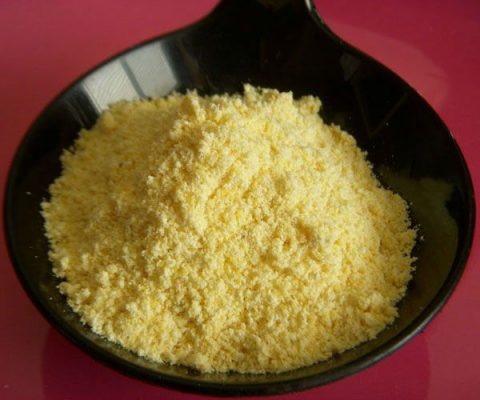
Sapa black chicken
Black chicken is a rare breed of chicken, the outstanding features of this breed are meat, black bones, low-fat content, firm and delicious meat. Black chicken, with black bones, enhances vitality and has a flavor, and has special medicinal value in treating cardiovascular diseases. Black chicken when eating sweet fragrant meat is a famous specialty of Sa Pa.
Salmon
Although raised in many places, until now Sapa salmon farm is still the most successful unit. Many domestic and foreign tourists have had the opportunity to explore and learn about the process of raising salmon, seeing with their own eyes the fish swarms swimming right at the foot of Silver Falls. The presence of rainbow trout in the northwestern mountains makes Sapa tourism products more attractive and diversified. The fish farm at the foot of Silver Falls is the most visited place by many tourists, because it is close to the tourist destination and located right at the foot of Phan Xi Pang, so it is very convenient to stop.
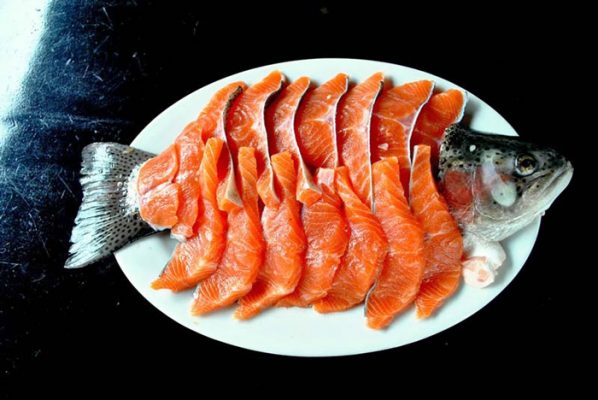
At 1,800m above sea level, rainbow trout originating from Europe and America are very “attentively” cared for in artificial ponds. The survival feature of rainbow trout is living in a “dynamic water” environment, low temperature below 15 degrees, so all the water in the ponds is led by a pipeline of 1,000 meters from Thac Bac Waterfall to the fish farm.
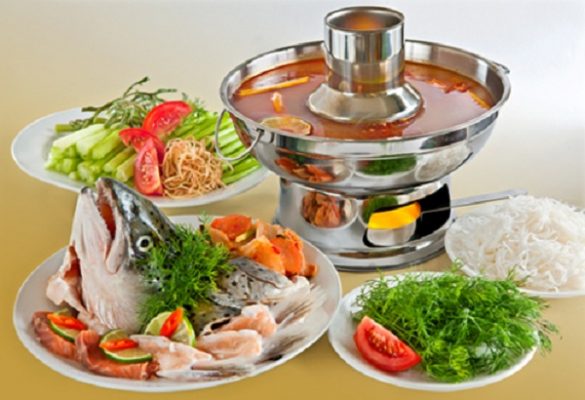
With its rich taste, beautiful pink color, high nutritional value, salmon is a luxury dish of tourists coming to Sapa. With a cool year-round climate and a cold winter, even snow-covered, Sapa salmon has a grainy texture, no fat, and quality is not inferior to imported salmon, very suitable for processing into many dishes. various things such as salad, hot pot, porridge, grilled salmon, steamed fish eggs, smoked fish, green vegetable salad served with salmon seasoned with orange sauce and green pepper, salmon stuffed with cucumber …
Thang Co
Thang Co is a traditional dish of the Mong people in the Bac Ha and Muong Khuong regions. However, over the years, this dish is captured first and varied by most ethnic groups. However, it still carries the typical flavor and ingredients of the cradle, the bones of horses, cows, and pigs. Thang Co is cooked with a lot of common herbs at the fair. They cook in a large pot for dozens of people to eat, simmer for a few hours when eating, draw the bowls. small. Eating Thang Co and trying to sip with a glass of corn wine, cat cider will give visitors an unforgettable experience.
Ban Pig
Or it is also known that pigs have their armpits. Under the skillful hands of a large chef stealing armpits are steamed, roasted, grilled,… every dish is irresistibly delicious. The meat is thick, crispy and sweet, and has a strong flavor, especially not at all. In Sa Pa, many restaurants are serving this dish, if you go crowded, you can order as a whole small, otherwise on the menu restaurants are also available to serve retail customers.
Some Sa Pa specialties bought as gifts
As a highland town with a cool climate, there are many delicious specialties in Sa Pa that you can buy as gifts for your family and friends when traveling to Sa Pa.
Lê Tai Nung Sa Pa
Lê Tai Nung originated from Taiwan, during the planting process in some parts of Lao Cai province, the fired Le Tai tree proved to be suitable with local soil and climatic conditions such as Bac Ha district, Sa Pa. Le Tai Nung blossoms flowers later than peaches and plums, so it is possible to avoid the extreme cold in winter, the harvest time in June and July (after the peach and plum harvest season). This fruit has a cool sweet taste with thin, juicy skin.
Sa Pa Peach
Sa Pa is famous for being a famous fruit-growing region, mainly French varieties (the original peach variety is almost no longer cut down to play) and planted locally. Sa Pa peaches are small, crunchy, and sour.
Mận Hậu Sa Pa
These plum trees were planted for over 20 years in O Quy Ho, a species associated with the life of the Sa Pa people, becoming a specialty fruit that many people want to enjoy. Unlike other fruit species, when ripe, the plums of Sa Pa are still green, but plump, nutty, sweet at the tip of the tongue.
Sa Pa Cabbage
The mustard plant belongs to a variety of vegetables with long dark green leaves, with curly edges, feeling like it is thorns, hairy, slippery. Cải Mèo is small, and hairy leaves taste better. In the past, people used to grow Cải Mèo for food, not for sale, so they did not pay attention to anything. Often, local people do not plant in rows or beds, but just scatter seeds on the hills and hills to grow naturally, the trees just grow and grow green.
Sa Pa’s Cải Mèo is cooked by locals in many ways: stir-fry, cook, boil or use it to eat hot pot. Normally, the simplest processing, just shredded, crushed ginger, and poured water into a boil. There is a bowl of cool soup, very suitable for diners to drink wine. More feat, vegetables can be cooked with minced chicken, do not forget to add ginger seasoning, seasoning with fish sauce, salt, enjoyers will feel a unique taste. The sweetness of the chicken mingled with the cool sweetness, the bitterness of the vegetables makes the eaters feel not bored.
Chayote
Due to being grown at an altitude of 1,500 meters, with high mountain humus fertility, the high difference in day and night temperature, high sugar accumulation, Sa Pa rubber has a sweet taste and Crispy is very characteristic. Rubber vegetables grown in Sa Pa always develop well, with high yield, good quality, and less use of plant protection drugs and growth stimulants.
There is a different feature compared to chayote grown in other localities: Sa Pa chayote is only grown once and harvested for many years. Therefore, there are so so roots in Sa Pa that are decades old. After each harvest season from April to November every year, people cut off the rubber bands on the ground, and at the same time, fertilize to care for the base. However, with the long cold weather at the beginning of the year, snowfalls, so the harvest of Chayote in Sa Pa will be later than normal years.
Forest shiitake mushrooms
Sapa is a land famous for its natural landscape and a place to keep the delicate and unique culinary culture. This land is endowed with a multitude of specialties of extremely delicious mountains, not to mention Sapa incense mushrooms. Sapa shiitake mushrooms are similar in appearance to other shiitakes but eat a mouthful, the natural aroma suitable for stir-fries or hot pot still has the aroma of mushrooms without drowning out the aroma of the food.
Sapa cat cider
Cat apple, or highland people, also known as lacquer, has long been famous for Northwest visitors. Talking about cat apples, people will remember a lot of Tram Tau or Mu Cang Chai of Yen Bai province, however, if you mention cat cider, you should immediately think of Sapa.
Each cat apple is washed to make the sour wine, undergoing different soaking steps depending on the family. Some people carefully split the lacquer fruit, soak the fruit in salt to reduce the sap, but others leave the island on the road to make more plastic and then put it in a glass jar or wine soaking jar. After 6 to 8 months, wine can reach its full level and produce delicious, nutritious wine.
Special festivals in Sapa
With 6 ethnic groups living together, each year there are dozens of festivals of ethnic groups H’Mong, Dao, Tay, Giay, Xa Pho (Phu La). Each festival has its own colorful culture. If you are lucky to come to Sa Pa at the right time when these festivals are held, you can take a little time to visit to learn more about life like the customs of the people here!
Some travel schedules in Sa Pa
Some travel schedules to Sapa and nearby tourist places for your reference. Based on this information, you can make adjustments to a personalized schedule.
Sa Pa 2 days 3 nights
Day 1: Hanoi – Lao Cai – Sa Pa
If you take a car or train at night, in the early morning you will be in Sa Pa. If the hotel allows check-in, try to check-in early or otherwise send items at the hotel to go out. Prepare some snacks and climb Ham Rong mountain. From here, you can see the panoramic view of Sa Pa Town and look up at the top of Fansipan.
Lunch at the town center. Afternoon motorbike rental to visit Muong Hoa valley, Sa Pa ancient beach, Cau May, Giang Ta Chai village, Ta Van village. Evening walk around SaPa night market and enjoy grilled specialties
Day 2: Sa Pa – O Quy Ho – Sa Pa – Lao Cai – Hanoi
Get up early in the morning, rent a motorbike to visit Silver Falls and Love Falls. Ride a motorbike to the top of O Quy Ho Pass, one of the Four Great Doses of the North connecting the two provinces of Lao Cai and Lai Chau, you can bring food from before to rest at any point. Afternoon visit Cat Cat village, Cat Cat waterfall. Return motorbikes, bathe for Dao people. Late afternoon, take the car back to Hanoi
Sa Pa 3 days 4 nights
Day 1: Hanoi – Sa Pa – Hanoi
Take the car the night before, early in the morning, you will be in Sa Pa, drop your luggage at the hotel, then walk down to Cat Cat village, along the way down there are many cafes with beautiful views where you can sit. Heaven is one of those shops.
When you finish from Cat Cat, you climb Ham Rong mountain, there are beautiful flower gardens on the mountain, remember to buy tickets from the foot of the mountain. Lunch down to rest, eat and drink, and check-in.
In the afternoon, you can go to Fansipan by cable car
Day 2: Sa Pa – O Quy Ho – Sa Pa
Rent a motorbike to visit Silver Falls, Love Falls. Ride a motorbike to the top of O Quy Ho Pass, one of the Four Great Peaks of the Northern travelers connecting the two provinces of Lao Cai and Lai Chau. Lunch on the road. Afternoon visit Muong Hoa valley, Cau May, Sapa ancient rocky beach, Ta Van village, Giang Ta Chai village
Evening walk around Town
Day 3: Sa Pa – Lao Cai – Hanoi
Rent a motorbike to visit Ta Phin village, a popular community tourism route. Visit the ancient Ta Phin monastery. Afternoon return motorbikes, take a bath for Dao people.
Evening in the car back to Hanoi
Hanoi – Bac Ha – Sa Pa – Y Ty
This schedule is appropriate around September, the rice season in Y Ty, Sa Pa. With this schedule, you need to bring a motorbike from Hanoi, drive one way and send the train back one way.
Day 1: Hanoi – Bac Ha
Bac Ha is about 300km from Hanoi, departing from Hanoi along Highway 70 to Bac Ngam then turn to road 153 to Bac Ha. Should depart from Hanoi around early morning to get to Bac Ha not too late. The first day should go on Saturday to walk around Bac Ha fair on Sunday morning.
Day 2: Bac Ha – Sa Pa
Get up in the morning to go to Bac Ha market, visit Hoang A Tuong Palace, go to some areas with plum blossoms, cherry blossoms, triangles … this depends on the season.
Around noon, we depart from Bac Ha to continue to Lao Cai and then to Sapa. Depending on the itinerary, you can stay in Sa Pa for 1 or 2 days. Evening to sleep in Sa Pa
Day 3: Sa Pa – Muong Hum – Y Ty
Get up for coffee in Sa Pa in the morning and then depart from Sa Pa, follow the direction of O Quy Ho to Muong Hum, and from here to Y Ty. On this 3rd Sunday, you will have the opportunity to attend the Muong Hum fair.
Night to sleep at Y Ty
Day 4: Y Ty – Lung Po – Lao Cai – Hanoi
On the morning of the 4th day, from Y Ty, he went in the opposite direction towards Bat Xat, passed A Lu to watch the rice. On the way back you can stop at landmark 92, Lung Po – where the red river flows into Vietnam.
If you go from early morning, until late afternoon, you will be in Lao Cai. Send your motorbike onto the Lao Cai train, take the night train, and leave the next morning in Hanoi.
Hanoi – Bac Ha – Sa Pa – Mu Cang Chai – Hanoi
Day 1: Hanoi – Bac Ha
Bac Ha is about 300km from Hanoi, departing from Hanoi along Highway 70 to Bac Ngam then turning to road 153 to Bac Ha. Should depart from Hanoi around early morning to get to Bac Ha not too late. The first day should go on Saturday to walk around Bac Ha fair on Sunday morning.
Day 2: Bac Ha – Sa Pa
Get up in the morning to go to Bac Ha market, visit Hoang A Tuong Palace, go to some areas with plum blossoms, cherry blossoms, triangles … this depends on the season. In short, this morning is the time for you to explore Bac Ha.
Around noon, we depart from Bac Ha to continue to Lao Cai and then to Sapa. Depending on the itinerary, you can stay in Sa Pa for 1 or 2 days. Evening to sleep in Sa Pa
Day 3: Sa Pa – O Quy Ho – Mu Cang Chai
Get up early in the morning to drink coffee in Sa Pa and then follow the O Quy Ho Pass to Lai Chau direction. At Binh Lu intersection, turn to Than Uyen – Tan Uyen to Mu Cang Chai.
Evening to sleep in Mu Cang Chai
Day 4: Mu Cang Chai – Khau Pha – Tu Le – Hanoi
In the morning, explore Mu Cang Chai and go up the 32nd to Hanoi, on the way back, you will see the rice along the 32nd road, in Khau Pha, Tu Le … If you like, you can extend one more day in Mu Cang Chai to relax. roof watching rice.
Some Tips when traveling to Sa Pa
If you come to Sa Pa for the first time, you will probably be surprised because many small children often go to work. In Cat Cat village, besides selling goods, they also ask for money. You notice that often if you want to take pictures with these kids, the babies will ask to buy something. In Cat Cat, you absolutely do not give money to children, although sometimes they can follow you for kilometers just to ask for 1-2k.
Some essential personal items you should bring when traveling in Sa Pa: a windbreaker and a thin scarf (because Sa Pa weather is still a bit chilly in summer), hats or umbrellas to cover small rain or dew, a small flashlight for use at night or when entering a cave. You can refer to the article to bring when traveling
Bring more than 1 type of identification (ID card, passport or bring an additional notarized copy) and driver’s license if you want to rent a motorbike to explore Sapa because you will (may have to) book Return documents to the car rental, 1 document will have to be left at the hotel.
Book a hotel online in advance if you intend to go in the high season, the advantage of this is that you can book in advance for a long period, possibly for a whole month, avoiding being close to the date but cannot book or have to book at a high price.
Similar to hotel reservations, you should also book train tickets or bus tickets to Sapa early to avoid running out of tickets, for train tickets should buy at Tran Quy Cap station or buy through travel companies, for Passenger bus tickets should be booked about 1 day on weekdays and 10 days on holidays
In Sa Pa, the situation of skipping tourists to buy things has somewhat worsened the image of Sa Pa in the eyes of tourists. If you do not intend to buy souvenirs, you should definitely, from the first time, not watch. Then don’t buy because at that time people will stick around for a long time, which can cause discomfort. When entering the village, children do not give money even though they follow you for kilometers.
If you intend to go to Fansipan, you should book the cable car tickets early to avoid having to queue at the ticket counter directly.
Related Article: Travelling to Trang An – Ninh Binh for the First Time (Tips & Tricks)
Let start your trip to Sapa – Lào Cai with us! If you have any feedback or need help, please send us an email through vietnamreviewer.contact@gmail.com!
Noted: All information and pictures are collected from the Internet!

